#fromsoftware meta narrative
Explore tagged Tumblr posts
Text
Thinking about how Thiollier gets invited to the final battle against Miquella because his existence is fanfiction personified.
Like, St. Trina and Miquella being the same being was an intriguing part of their character. People theory crafted about this for 2 years. And then Miquella abandoned the sweet dream of St. Trina after Mohg's bloody nightmare was forced upon him, but Thiollier still believed. Thiollier's attachment to St. Trina is so strong that he rejects Miquella at her request. And if not for that request, Thiollier would linger forever in the velvety dream of lost potential - shut off from the rest of what the Shadowlands has to offer.
The mechanics of Elden Ring do not allow the character of Miquella to live up to the theorizing. The archetypical role of Miquella is the idealist whose dream is crushed by reality, which could already be seen by the ominous way that the bloody cocoon was staged in the base game. A game can only be coded to do so much, and with Elden Ring there is no such thing as a post-game utopia where you get to hang out with all of your NPC buddies and rebuild civilization. Your options are to either quit the game world or start another loop. Adding pacifism functionality is beyond the scope of the Lands Between, even as a DLC.
It's a game where you fight and kill enemies, which is why Ansbach is the other NPC invited to that last fight. They are two extremes of a spectrum. Thiollier embodies the point of view of rejecting the game version of Miquella and making your own "fix-it" alternative universe through imagined narrative content. Ansbach embodies the point of view of rejecting the mechanical content that FromSoftware has crafted and instead prolonging the experience of the game in other ways - such as finding the PVP of the Bloody Fingers more engaging and balanced than repeating the boss fights.
Altogether, a world for "not for gods, but for men" is to ignore the complex puzzle box story actually crafted by FromSoftware in favour of content generated by fellow players. Not bad in moderation, but also a "show don't tell" case study on how using emotion rather than logic in interpreting complex ideas is a magnet for outrage peddlers (Ansbach), and toxic infighting (Thiollier).
#elden ring#shadow of the erdtree#I wish people would pay closer attention to “Remembrance of the Blood Lord” to see how badly the DLC Miquella has been twisted by Mohg#“I had a dream my life would be so diff'rent from this Hell I'm living”#“So diff'rent now from what it seemed. Now life has killed the dream I dreamed”#It has been a while since I played “I Dreamed a Dream” - should add it to my next piano practice#theory synopsis#fromsoftware meta narrative
29 notes
·
View notes
Text
Best 7 PlayStation 5 Games That Offer Fun for Every Gamer

The PlayStation 5 has established itself as a gaming powerhouse, with a growing library of titles catering to diverse preferences. Here are the best PS5 games that promise endless entertainment:
Alan Wake 2: A survival horror masterpiece combining meta-mystery with intense gameplay, where players alternate between Alan and Saga’s gripping narratives.
Animal Well: A mysterious Metroidvania puzzle-platformer with stunning pixel art, perfect for fans of intricate puzzles and exploration.
Armored Core 6: Fires of Rubicon: FromSoftware’s customizable mech-combat game with captivating storytelling and finely crafted mechanics.
Astro’s Playroom: A delightful platformer showcasing the PS5’s features with its DualSense controller integration and charming gameplay.
Baldur’s Gate 3: A rich RPG with deep mechanics, strategic combat, and a sprawling world, offering endless customization and immersive storytelling.
Cyberpunk 2077: A vibrant, open-world RPG featuring a futuristic setting, engaging characters, and player-driven narratives.
Deathloop: An innovative first-person shooter blending strategy, action, and a time-loop mechanic for a unique gaming experience.
These games not only highlight the power of the PS5 but also ensure fun and excitement for every gamer, whether they prefer action, exploration, or storytelling.
0 notes
Text
DualShockers’ Game of the Year 2018 Awards — God of War Takes Home the Gold
Welcome back, everyone, to DualShockers’ annual Game of the Year awards selection! We are all one year wiser, and one year more excited than we were in 2017. Thankfully, 2018 has been a rather contentious year with mega-hits like God of War, Red Dead Redemption 2 and Monster Hunter: World having a strong showing — we are in no shortage of amazing hits to choose from.
To begin, a quick shoutout to everyone who has checked out DualShockers through the year. As we approach our tenth anniversary as a site, there is nothing that we appreciate more than the active community willing to read our hot takes, reviews, and uncut excitement. Even better, we appreciate the participation that everyone put in with helping decide the Readers’ Choice Game of the Year and Readers’ Choice Most Anticipated Game of 2019! As always, our community has impeccable taste, and we are looking forward to one of the strongest years in gaming.
As a quick note, for more information on the popular votes and how everything was determined, please check out the respective posts for GOTY and Most Anticipated. You can also listen to our own extended discussion where we determined our own staff Game of the Year in our new episode of Drop In/Drop Out.
Without further ado, here are DualShockers’ Game of the Year Awards for 2018!
DualShockers Game of the Year 2018: God of War
For the past two years, we’ve coincidentally shared a tradition of agreeing with our readers on what Game of the Year is, with 2016 going to Final Fantasy XV and 2017 going to Persona 5. We’re happy to report that this happened again this year, with Sony Santa Monica’s God of War winning both DualShockers Game of the Year Award and our Readers’ Choice Game of the Year Award.
While there were many games in 2018 that will likely go down as some of the best of the generation, God of War was able to stand above the rest thanks to the masterful character building, a clever and engaging twist on an older franchise, and some of the tightest controls we have seen within the action-adventure genre.
In addition to DualShockers Game of the Year 2018 and Readers’ Choice Game of the Year Awards, God of War also manages to bring home the following: Best First Party Game of the Year, Best PlayStation 4 Game, Best Action Adventure Game, Best Narrative, and Best Soundtrack. If you haven’t read it yet, take a moment to read our review of the game where DualShockers awarded it a perfect score.
Of course, the DualShockers staff was incredibly split on the decision — though our other votes were handled through a voting system, we chose to make our cases for all of our favorites of 2018 in a recorded debate. If you want to hear what that sounds like, make sure to check in on the latest episode of Drop In/Drop Out: GOTY 2018 podcast.
As for the Readers’ Choice award, turnout heavily favored God of War with it nabbing over 50% of the votes — the largest win we’ve had in a Readers’ Choice award ever. Coming in second was Rockstar Games’ Red Dead Redemption 2 with over 10% of the readers’ vote.
Outside of the top two games, Insomniac Games’ Marvel’s Spider-Man takes the third place with Square Enix’s Dragon Quest XI: Echoes of an Elusive Age in fourth place and Capcom’s Monster Hunter World in fifth.
Below you can see a pie chart with the vote split, and the indication of the games that receive the most nods from our readers. Congratulations to Sony Santa Monica and God of War for reaching DualShockers’ top honor for 2018!
Most Anticipated Game of 2019: Sekiro: Shadows Die Twice
There were a lot of great looking games that were revealed at E3 2018, but none really captured our hopes as much as FromSoftwares Sekiro: Shadows Die Twice. There are a lot of buzzwords and marketing spin that hits home for us — there are no microtransactions and the game will be similar in size to both Dark Souls 3 and Bloodborne. More important to us, our E3 preview felt like everything we wanted from a Souls-like game but evolved.
Most Anticipated Game of 2019 (Readers’ Choice): Kingdom Hearts III
In a funny enough twist, Kingdom Hearts III is taking home the same prize it won in 2017: Readers’ Choice Most Anticipated Game of 2019. Pushed from its Winter 2018 release slot in an early-E3 announcement, it’s no wonder why people are so hyped for the game. It’s been over a decade since the last mainline series title, so do yourself a favor and keep well away from potential spoilers.
With that said, there was pretty hefty competition for every game that wasn’t Kingdom Hearts III with a broad range of diversity. Next on the list is Capcom’s Devil May Cry 5, a game similarly with a prestigious background and one set to blow away expectations.
Following that, readers on the site are similarly interested in the remaster of Resident Evil 2 that continues to look oh-so-juicy in trailers and screenshots. Rounding out the top four is FromSoftware’s Sekiro: Shadows Die Twice, ultimately meshing well with the staff pick for Most Anticipated of 2019.
If you are interested in the breakdown from votes, check out the quick infographic below:
Hardware of the Year: Xbox Adaptive Controller
While this year was devoid of any major console hardware releases, there was still a ton of competition within this category. And while headphones, capture cards, and laptops blew us away, the easy choice among staff was to award Hardware of the Year to the Xbox Adaptive Controller.
Announced and released this year, the Xbox Adaptive Controller is an ambitious and inclusive project that brings many differently abled gamers into the fold, allowing them to play more games than ever before. Even better, Microsoft decided to keep the hardware accessible to anyone who is able to develop it further for more interesting ideas. The collaborative mindset behind this, as well as the message behind it, gives Microsoft and the Xbox Adaptive Controller the nod as the best gaming hardware out this year.
Indie Game of the Year: Celeste
While there is a good chance that Celeste may get a cold eye from other publications due to the fact it was one of the first games released this year, it is an indie game that demands your attention. With all of the sweet platforming mechanics of Super Meat Boy and the heart and wit of puzzle platformers like Braid, Celeste is an unmistakable achievement in the already-competitive platforming and indie scene.
In addition to Best Indie Game of 2018, Celeste also takes home the prize for Best Platformer Game. If this game slipped under your radar, feel free to check out the review from earlier this year.
Best Online Game: Monster Hunter: World
The Monster Hunter series has always been a powerhouse in the East, but never before has it had so much sway globally as it did in 2018. With the release of Monster Hunter: World the once dense and impenetrable meta of Monster Hunter opened its doors to the world, presenting a masterful online experience that required determination, cooperation, and strategy to overcome. With a good group of friends, this is the best time online you will have all year.
While there may be a few hiccups of the PC version of the game, don’t miss our original review of the PS4 version of Monster Hunter: World.
Best Developer: Santa Monica Studios
This may be no surprise given the awards that Santa Monica Studios received from us on God of War. However, this goes further than that.
While Santa Monica Studios has been helping and collaborating on a collection of Sony titles over the year like The Order: 1886 and Everybody’s Gone to the Rapture, we haven’t seen a fully-internally developed game for five years. Specifically, God of War: Ascension which released on the PlayStation 3.
Since that time, Santa Monica Studios (led by Shannon Studstill and key figures like Cory Barlog) have honed their crafts — arguably giving them the slot of Sony’s best first party studio. Time will tell how competitive that spot is with major releases next year, but Santa Monica Studio has cemented itself as more relevant than ever in 2018. We can only look forward to their next project.
Best Publisher: Sony Interactive Entertainment
While it is easy enough to heap praise on Santa Monica Studios, it’s important to note that Sony Interactive Entertainment went above and beyond as a publisher this year. This year alone we got God of War, Detroit: Become Human, Marvel’s Spider-Man, and Shadow of the Colossus. And that is ignoring the VR space — Astro Bot Rescue Mission and Firewall: Zero Hour are amazing in their own right. As a publisher, there is no company that has been more consistent with high-quality releases.
Best PlayStation 4 Game: God of War
Best Xbox One Game: Forza Horizon 4
While the Xbox One was rather light on console exclusives this year, Forza Horizon 4 remains a gold star among the racing genre. In fact, we go as far as saying it is one of the best racing games this generation of consoles has to offer.
Along with Best Xbox One Game, Forza Horizon 4 picks up Best Racing Game this year. Feel free to check out our review of the game where we awarded it a 9.0 out of 10.
Best Nintendo Switch Game: Super Smash Bros. Ultimate
Meanwhile, on the relatively new Nintendo Switch, we saw a bit of a slower year for Nintendo compared to 2017 which produced The Legend of Zelda: Breath of the Wild and Super Mario Odyssey. Even with that said, the late-2018 release of Super Smash Bros. Ultimate is the complete package. While other fighting games are looking to tweak, tune, and find a new hook to keep everyone and everything interesting, Super Smash Bros. Ultimate does exactly what it needs — adds everything from the series in. Add an eventual Persona 5 character and we are in the money.
Along with Best Nintendo Switch Game, Super Smash Bros. Ultimate takes home Best Fighting Game. We won’t dive into the deep conversation on whether Smash Bros. series is a “fighting game” — there was plenty of disagreement among staff. However, make sure you check out the new review that went up earlier this week for Super Smash Bros. Ultimate.
Best PC Game: Hitman 2
Best PC game was a rather elusive mistress, with plenty of titles in hot contention. However, IO Interactive’s Hitman 2 takes the prize by offering one of the most satisfying gameplay loops that gaming has to offer. Even better, the Hitman series evolving into more of a “platform”-type release gives us a lot to look forward to moving into 2019.
If you haven’t read it yet, check out our review of Hitman 2 — a game that was so good that the writer couldn’t get it off his mind while writing it.
Best PlayStation Vita Game: Persona 3: Dancing in Moonlight // Persona 5: Dancing in Starlight
The PlayStation Vita is starting to get long in the tooth, with the releases slowly waning in the West. And while that is something the whole DualShockers staff is mourning on, the dual release of Persona 3: Dancing in Moonlight and Persona 5: Dancing in Starlight are the must-grab games for Persona and PlayStation Vita fans this year. Make sure you check out our dual reviews on the game to see if they are games you can groove to.
Best Nintendo 3DS Game: WarioWare Gold
Similar to the PlayStation Vita, it seems like the Nintendo 3DS is starting to finally slow down from a long reign of releases. Even still, WarioWare Gold was able to offer a short-but-sweet experience packed with the series’ signature style, humor, and quick reflexes. If you have been keeping your Nintendo 3DS somewhere collecting dust, check out our review of the game and consider picking it back up for a brand new outing.
Best Mobile Game: Donut County
Another console that had a shining year was the mobile platform, including mobile ports of games like Fortnite and PlayerUnknown’s Battlegrounds to flesh out the market. Even still, we come down that Ben Esposito’s Donut County is the Best Mobile Game of 2018. The hook of the game is charming and straightforward, but just as satisfying to pick up and play in short bursts as it is on consoles. Even if you typically avoid mobile games, check out our review for Donut County.
Best Action-Adventure Game: God of War
Best Battle Royale of 2018: Fortnite
Unlike other genre categories, Best Battle Royale of 2018 isn’t limited to games that release this year. Instead, we are looking at the meta development, evolving gameplay, and fanbase of the different Battle Royale games to choose the winner. With this in mind, Epic Games’ increasingly popular Fortnite takes home the gold, proving time and time again that they remain popular not just because of the excellent game design and free-to-play model, but also their approach to development and interacting with the community.
Alongside Best Battle Royale Game of 2018, Fortnite also takes home the Best Ongoing Game award.
Best DLC or Expansion: Destiny 2: Forsaken
Destiny has been on the scene for many a year now, and developer Bungie has really gotten around to perfecting the art of annualized releases. This year’s addition, Destiny 2: Forsaken is one of the best the series has ever seen and our choice for the best expansion of the year. The pièce de résistance is the newly-added Gambit Mode, a mixed cooperative and competitive multiplayer mode that really tests the bounds of what Destiny 2 does that other games simply can’t.
You can check out our review of Destiny 2: Forsaken where we go into more detail on those points.
Best Family Game: Pokémon: Let’s Go, Pikachu! // Pokémon: Let’s Go, Eevee!
The Family Game genre had a relatively light year, though Pokémon: Let’s Go, Pikachu! and Pokémon: Let’s Go, Eevee! are standouts. Not only does it remain a terrific way for you to introduce younger kids to Pokémon, but it shows the initial promise of what a Nintendo Switch core Pokémon RPG will look like in 2019. Our review of the game is available here if you were looking to grab a kid-friendly holiday game for Christmas.
Best Fighting Game: Super Smash Bros. Ultimate
Best Horror Game: State of Decay 2
Love it or hate it, State of Decay 2 can really do something right: catch you by surprise. While the world is filled with zombies, some of the best jumpscares you may get all year can come from Undead Labs’ third-person zombie survival game — whether it was intentional or not. Check out the review of State of Decay 2 for more info on the sequelized horror title.
Best Interactive Story Game: Detroit: Become Human
In a relatively bleak year for interactive story games (following the closure of Telltale Games), Quantic Dreams’ Detroit: Become Human is a standout in terms of the studios’ prior games and complex storytelling. With some of the best acting the industry has to offer and a terrific story, we go as far to say it is Quantic Dreams’ masterpiece.
If you are looking for a spoiler-free review of the game, DualShockers has you covered.
Best Metroidvania: Dead Cells
While Dead Cells has been a game everyone was talking about in Early Access, we finally saw the official release of the game this year. And it certainly lived up to the hype. Mixing equal points platformer, Metroidvania, and rogue-likes, Dead Cells is a complete pick-up and play package that should be giving you Spelunky vibes. Add in a lot of customization, and this is a game that was heavily vying for Indie Game of 2018. For more information on what you may be missing, check out our review on the game.
Best Platformer: Celeste
Best Puzzle Game: Tetris Effect
Tetris is a game series nearly as old as gaming itself, and it’s almost hard to believe that they can improve on the formula even more. Well… think again. This time placed within a VR space, developer Monstars Inc. and Resonair have molded Tetris VR into a must-buy experience for the PlayStation VR. This is a game with near-universal appeal thanks to the simplicity of the puzzle, stunning visuals, and hypnotic beats; all things perfect for virtual reality.
Along with Best Puzzle Game, Tetris Effect also wins the award for Best Virtual Reality Game. Make sure to check out our review of the game.
Best Racing Game: Forza Horizon 4
Best Remake or Remaster: Shadow of the Colossus
youtube
While there were many amazing remakes and remasters that came out in 2018, developer Bluepoint Games did something magical with Shadow of the Colossus. Feel free to check out the video above showing off the comparisons, but the new remaster of the game is a ground-up improvement of everything: textures, gameplay, framerate. It breathes life into one of the most important games in history and immediately makes me yearn for a The Legend of Zelda: Ocarina of Time remaster.
Feel free to check out our review, where we called the game “one of the best remakes ever.”
Best Role-Playing Game: Octopath Traveler
2018 was host to many premium JPRG’s — games like the Eastern Ni no Kuni II: Revenant Kingdom and the Western Kingdom Come: Deliverance. However, our pick of the year is developer Acquire and Square Enix’s Octopath Traveler. Not only is it a terrific game in its own right, but it shows how the traditional top-down JPRG can be evolved from both a storytelling and visual perspective. With definite room to grow, we hope the ambition that was thrown into this project will influence games both within and outside the RPG genre. For more takes on the game, check out our review where we noted it was “a new look for the legendary genre.”
Best Shooter: Call of Duty: Black Ops 4
For all the grief that Call of Duty gets as a series, it is undeniable that the game has one solid foundation: unmistakably tight shooting mechanics. This year’s iteration, Call of Duty: Black Ops 4, is no exception, eeking ahead of games like Far Cry 5 for best shooter. Once again, if you missed our review in the busy Fall release schedule, you can check it out here.
Best Sports Game: Mario Tennis Aces
Sure, it may not be your “traditional” sports title like your FIFA’s or Madden, but Mario Tennis Aces is still at heart a sports game — and one that approaches tennis in a way no other game in the past few years has been able to do. With a (somehow) constantly evolving meta and frequent updates, it’s hard not to be impressed with what Nintendo is able to do with sports games. Now bring back Mario Superstar Baseball!
For a more detailed explanation on why Mario Tennis Aces had such a strong showing, check out our full review on the game.
Best Strategy Game: Valkyria Chronicles 4
One of our few contenders for Game of the Year 2018, Valkyria Chronicles 4 managed to be everything the fanbase wanted — and there were a lot of expectations. However, developer SEGA SC3 was able to show that the company is getting back in the game; SEGA is not to be messed with in 2018, or the upcoming years. If you were ever looking to jump into the Valkyria Chronicles series, there is no better time. For more information, check out the full review.
Best Virtual Reality Game: Tetris Effect
Best Art Direction: Return of the Obra Dinn
youtube
Leading the technical awards is The Return of the Obra Dinn, developer Lucas Pope’s adventure puzzle game. Without a major PR budget, this is a game that may have entirely sneaked by you in 2018. However, if you have any doubts in your head on why the game deserves the award for Best Art Direction, check out the video above and note the unique 1-bit aesthetic that the entire game is based in. In a world of bleeding edge graphics and experimentation, The Return of the Obra Dinn takes the gold.
Best Audio Design: Red Dead Redemption 2
Appearing for the first time on the list so far, Red Dead Redemption 2 is a technical marvel unparalleled within the industry — a fact that everyone at DualShockers agrees with. Whether we are talking graphics or audio direction, or the art of building a living, breathing world in-game, Red Dead Redemption 2 has raised the bar on game development in ways unseen since The Witcher 3: Wild Hunt.
Alongside Best Audio Design, Red Dead Redemption 2 also wins Best Graphics and Best Open World. For a deep-dive into what makes Red Dead Redemption 2 so special, check out our review of the game.
Best Character: Kratos (God of War)
Kratos has been with gamers for over a decade, making his original appearance on the PlayStation 2 with the initial God of War. Thirteen years later, we see an evolved Kratos — one touched by misery, loss, and the grief of his burdens. Better yet, he is a father, yearning to develop his son into a better person– err… god, than he could ever hope to be. Since his last appearance, Kratos has evolved into a character that can evoke more than just anger — thanks to the intricate development of God of War‘s story, it is hard not to award him Best Character.
Best Graphics: Red Dead Redemption 2
Best Narrative: God of War
Best Open World: Red Dead Redemption 2
Best Ongoing Game: Fortnite
Best Performance: Christopher Judge (Kratos, God of War)
Christopher Judge isn’t Kratos’ first voice actor, but he is the one who is able to give the most depth to the god of war. With each “Boy!” or angry growl, there was a nuance that only Judge is able to add to the equation. Judge is a leader in the industry, showing how the voice acting work can play equal parts in developing a story and character — if not more so — than the script itself.
Best Soundtrack: God of War
If you are interested in listening to the Norse-inspired soundtrack of God of War, check out the spotify playlist below:
Biggest Shocker of 2018: Sony is Skipping E3?
Leading our two superlative awards, the Biggest Shocker or 2018 was the official announcement that Sony will be skipping out on E3 next year. Sure, Nintendo has done something similar in the past opting for Nintendo Directs instead of a major press conference. While we think this is far from an E3 killer, having the biggest game publisher step away from the biggest gaming conference is no small announcement and took us entirely by surprise.
Worst Game of 2018: Fallout 76
Meanwhile, Fallout 76 is managing to “win” our Worst Game of 2018 award. While there are more than a few big games that could have stolen this honor from Bethesda, little had as much promise or fan build-up behind it to propel it to the top. Even worse, the first few weeks of the game felt nearly-unplayable, even compared it Fallout 4.
On the bright side, Fallout 76 is another title meant to be a game as a service. Hopefully, we will see a big year for Fallout 76 in 2019 to win back a jaded community.
And there you have it! Those are the official picks for DualShockers’ 2018 Game of the Year Awards.
Over the next week or two, each individual staff member, editor, and community manager will be listing out their Top 10 games of 2018 — make sure to tune in to see where you fall in comparison. And as always, let us know how we did in the comments below.
Top 10 of 2018 Schedule:
December 18: Lou Contaldi, Editor in Chief // Logan Moore, Reviews Editor December 19: Ryan Meitzler, Features Editor // Tomas Franzese, News Editor December 20: Scott Meaney, Community Director December 21: Reinhold Hoffmann, Community Manager // Ben Bayliss, Staff Writer December 22: Ben Walker, Staff Writer // Chris Compendio, Staff Writer December 23: Eoghan Murphy, Staff Writer // Grant Huff, Staff Writer December 26: Iyane Agossah, Staff Writer // Jordan Boyd, Staff Writer December 27: Max Roberts, Staff Writer // Michael Ruiz, Staff Writer December 28: Noah Buttner, Staff Writer // Rachael Fiddis, Staff Writer December 29: Steven Santana, Staff Writer // Tanner Pierce, Staff Writer December 30: Travis Verbil, Staff Writer // Zack Potter, Staff Writer
The post DualShockers’ Game of the Year 2018 Awards — God of War Takes Home the Gold by Lou Contaldi appeared first on DualShockers.
DualShockers’ Game of the Year 2018 Awards — God of War Takes Home the Gold published first on https://timloewe.tumblr.com/
0 notes
Text
Bandai Namco: releases a Evanescence "Bring Me to Life" AMV trailer featuring the Revenant as promo for Elden Ring Nightreign.
...well I guess if you're going to give this away for free I'll take it.
Bring Me to Life is the second track on Evanescence's debut album titled "Fallen" which was released on March 4, 2003.
Fortuitously, this is the anniversary of FromSoftware's Eternal Ring, released on March 4, 2000.
I still need to finish writing some stuff about Armored Core to tie everything together, but basically this is consistent with the previous trend I've noticed. Which is that FromSoft seems to have been surreptitiously writing songfics for quite some time now. It's in Bloodborne. It's in Elden Ring. And the Round Table Hold itself is conveniently arranged as an Octavarium.
When the Revenant was first revealed there was a thread on Reddit taking an interest in the character for the fact that she plays a harp, and one of the few known facts about the creator god of King's Field is that they are associated with the harp also. So, even since the early days there has been an affinity for music with the developers.
What I mean is that I completely expect that it wasn't some visionary in the marketing department who decided to make an AMV trailer - there is a high chance that this character's backstory was literally designed from the ground up with inspiration from the lyrics of the song "Bring Me to Life" by Amy Lee and Evanescence.
#elden ring#nightreign#fromsoftware meta narrative#playing lore sudoku just gets easier with time#reminded me of that rumor that the main character of Ergo Proxy (2006) was visually designed after Amy Lee's face on the cover of Fallen#according to the artists they actually took main inspiration from Avril Lavigne (and a bit from Amy Lee) - the more you know
10 notes
·
View notes
Text
yes
Anyone else get the naggling feeling that all of FromSoft's games are actually a multiverse with a common origin? I downloaded a sample of a book about Vedic cosmology and am convinced more than ever that this is so. Do you know how a multiverse is represented in this line of thought? A tree.

It would certainly explain the similarities between all of the games, as well as the upcoming Nightreign and Duskbloods.
#elden ring#this is why an entire section of my pinned post is dedicated to FromSoftware meta-narrative stuff#that asymmetrical tree fractal is very aesthetically satisfying
27 notes
·
View notes
Text
Elden Ring - Thoughts about the Blood Star
For the question "What is the Blood Star?" I find that there is a simple answer and a complicated answer.
Simple answer: Mars, the red planet. Wandering stars = "outer" gods. In the sense of literal outer space.
Complicated answer: 2112. With its minimalist album cover featuring a red star emblem.

There's a subtext to Bloodborne and Elden Ring that "blood" is equated with "sound". Blood "echoes", blood sings sweetly, upcoming game Nightreign has that Recluse ability "Song of the Blood Soul". Bloody Fingers are thematically like an intrusive thought invading your world - like a song that you can't get out of your head.
It's frankly farcical to re-contextualize the blood faction as "fanatics dedicated to music and pop-rock references" and I expect it's a perspective that's not for everyone. But to further examine the concept I've written longer examinations of some of these musical references in Elden Ring and Bloodborne.
The purpose of this post is to layout a rationale for the exact point in real world history when FromSoftware first solidified their homage to the Rush album 2112: Armored Core 4 (2006)
Establishing the Meta-Narrative
In my opinion, FromSoftware has been curating a musical meta-narrative since at least 1997. They have been doing this in a very odd way: through the calendar dates on which their games release.
For most of their early games this doesn't pay off immediately - more like a seed planted to harvest later when FromSoft moved into an era of "eating it's own tail" and digging things up from this early history for design inspiration. I have lists of specific examples of places where the long-running musical meta-narrative is drawn upon to inspire parts of the actual narrative of Elden Ring, for bands including The Beatles, The Scorpions, Dream Theatre, Genesis, The Smashing Pumpkins, Heart, etc. For a non-music example, it's like in Dark Souls where black dragon Kalameet and Seath the Scaleless are loosely based on dragons Guyra and Seath from King's Field.
At the time of AC 4 Rush had released 17 studio albums with the most recent being Vapor Trails (2002). In my opinion, that was the Rush album that caught the interest of FromSoftware, with Test for Echo (1996) being a close second. Or else it was the juxtaposition of the two, as the lyrics from Test for Echo were inspired by pop psuedo-psychology and lyrics for Vapor Trails were from a place of experiencing true grief, introspection and psychological healing (I won't get into the history - read up on lyricist Neil Peart's biography from this time period to understand why).
It can be inferred that FromSoft was considering a new direction for their creative output around 2002-2004 - as seen by the way that they discontinued every pre-2005 game franchise that they owned, aside from the recently acquired Tenchu IP. Even AC 4 was a hard reboot of its franchise.
In hindsight from an examination of Elden Ring the later years of Rush circa 2002-2012 is very close to what FromSoft wanted to build towards: poetic introspection on humanity and finding the will to keep going after your worldview is shattered. The start point of Rush is where they are in 2004: best known for either dystopian sci-fi or high fantasy stories, with a scattering of entries on other topics. So my impression is that in a "rush" FromSoft laid the groundwork to start their pivot in direction by anchoring at 2112. And also hired a social scientist who showed up knocking on their door (that being Hidetaka Miyazaki).
I mention this in the Bloodborne post, but cross comparing calendar dates there are 3 matches for the anniversary of Rush albums within a 4 month period of time: Kings's Field Mobile on January 14, 2004 (7th album "Permanent Waves", 1980), Armored Core Nexus on March 18, 2004 (1st album "Rush", 1974), Kuon on April 1st, 2004 (4th album "2112"...allegedly, 1976). 2112 is in a odd place where its actual release date is not remembered but the band themselves acknowledge it as April 1st. Although another comment that I would add about Kuon is that it also has a blood theme - doors are unlocked with scraps of cloth that are named for the planets of the solar system and splattered with bloodstains that increase in quantity with the planet's distance from the sun.
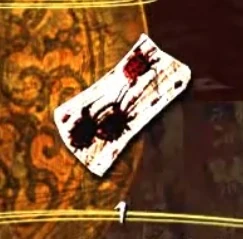

Kuon Sacred Cloths for Earth and Mars
Examination of Armored Core 4
So with all of that background, the first point that ties AC4 to Rush is the release date. The album release date is uncertain, but the FromSoftware website is explicit that the first release of AC4 was on December 21, 2006 - a date that can be written as 2112.
Secondly, the setting of AC4. The background for the story is that a company based on Great Slave Lake in the Northwest Territories of Canada was responsible for developing a next-gen technology that powers the AC units - called "Kojima particles" - in the years before the current events of the game. Rush is a Canadian band, and the album artwork for Test for Echo was inspired by an inukshuk seen by Neil Peart on a trip to the Northwest Territories.
Thirdly, the themes. FromSoftware has a tendency not to copy directly, but to take bits and pieces. Armored Core 4 was going to be themed around the sun regardless of a music tie-in - that was non-negotiable because of a totally different pattern where all Armored Core games are themed around astrology in sequence (they show their hand on that with the "Zodiac" faction in AC 5). AC 4 happened to align with "Leo" which has the planet ruler of the sun.
The story of 2112 is about a future where the planets of the solar system have been colonized, the last war several years ago led to the rise of a faction of religious zealots who outlawed music and established The Solar Federation, and in the present a rediscovery of music leads to a rebellion with an ending ambiguous as to whether the rebels or the ruling faction won. The FromSoft twist on this concept is that they actually relocate their setting to a near-future Earth in contrast to previous games that took place on Mars or blasted post-apocalypses....but EVERY faction is themed around the sun. So the peoples of Earth are collectively a Solar (sun-themed) Federation (set of groups with individual autonomy).
As it goes in the lyrics of song "Entre Nous" from Permanent Waves (album previously mentioned): "We are planets to each other / Drifting in our orbits / To a brief eclipse / Each of us a world apart". In the more pessimistic context of AC4: who needs some fantasy space war when we already live on a single planet together where many nations/corporations act recklessly to tear each other apart as if they have a back-up planet on the sidelines to retreat to when this one gets trashed?
Perhaps also consider each faction as a planet who has a different and incompatible ideological position on "what is the sun to us?" A real life example: the Earth with its moon perfectly sized and located to produce total solar eclipses would experience the sun differently compared to Pluto from which the sun is 1/900th of the brightness and seems to be a very bright star, or compared to Mars which has two moons so small that a person standing on the planet's surface wouldn't even notice if they crossed the sun.

from sketchplanations
And that is altogether how I believe FromSoft to have been partly inspired by progressive rock band Rush starting with references in Armored Core 4.
What does it mean to be Lord of Blood?
There's something more to be said about what the Blood Star means to Mohg - a return to an idealized past. Similarly, while it's tempting to look to the past with rose-tinted glasses, there are some notable criticisms of 2112.
The album includes in its liner notes an acknowledgement of the writing of Ayn Rand - who developed the personal philosophy of Objectivism, which would go on to influence the right wing politics of Libertarianism in the United States. The issues here are multiple - firstly that the specific part of Rand's work that the band found attractive was her views on personal artistic expression - hence the themes of the song itself - but there is a tendency for people to mistake them as agreeing with ALL of Rand's controversial body of work. Secondly, that for the rest of their careers the members of Rush would end up explaining time and time again that they had moved on - they went through a Rand phase from about 1976-1980, and then continued to absorb other influences as happens with many young people.
With a wider view of context, the reason why Rush in 1976 would resonate so strongly with themes of artistic freedom becomes clearer. Their third album leaned into long narrative driven dark fantasy-themed songs and was a flop, with the prevailing mood on the following tour being that this might be the end. With the fourth album there was pressure to become more commercially appealing - write songs that would get radio play. Instead they doubled down on the kind of long-form compositions that they were passionate about and wrote 2112, of which the first half of the album is the eponymous 20-minute long song. The album was a commercial success, and the rest is history. It was later when they were well established with their 7th album Permanent Waves (1980) that Rush gravitated to writing shorter radio friendly songs more on their own terms.
---
Consider how many of these same factors were repeated with the rise of videogames as a medium through the 1990's and 2000's. There's pressure from investors to make commercially successful games - it's a struggle between making good art and making art that delivers on time, under budget, and focus tested to capture as much of the market as possible. While thematic story elements can be drawn between Armored Core 4 and 2112, from a real world perspective it is the success story of Demon's Souls (2009) that more closely parallels evolution of Rush as a band. It doesn't get mentioned much, but Miyazaki's directorial debuts with Armored Core 4 and 4A weren't exactly considered stellar - with the games both receiving mixed or average reviews. Demon's Souls was during its development considered to be an unfocused and floundering project. So it was a pairing of a director who had yet to really distinguish himself and a dark fantasy setting that he was both passionate about developing and given the creative freedom to implement novel ideas.
In the mythology around Demon's Souls, one of the greatest reasons for its critical success was that it dared to be different in offering brutal difficulty during a time frame when games were trending towards low skill ceilings to chase higher completion rates for wider audiences. Dark Souls (2011) proved that the success of Demon's Souls wasn't a fluke, and once again the rest is history.
---
In his 2023 auto-biography lead singer of Rush - Geddy Lee - makes it a point to address some controversy around the song "Freewill" from Permanent Waves:
"I sang it every night with confidence and pride, offering it to audiences as a contribution to the time-honoured discussion about existentialism, determinism and faith. It was, in fact, indeterminism that I believe was at the heart of it - the idea that our lives are not predetermined - and I hoped that would come across; but in the four decades since, I've seen people play fast and loose with the interpretation of the last lines of the chorus: 'I will choose a path that's clear I will choose free will' To my dismay, those words have been cited without regard for the song's overall message and used as a catch-all, a license for some to do whatever they want. It makes me want to scream. Taken out of context, if becomes an oversimplified idea of free will, narrow and naïve, not taking into consideration that even the strongest individual must, to some extent, bow to the needs of a responsible society. During the Covid pandemic, I saw this first-hand. When I posted a picture on Instagram of myself wearing a mask, loudmouths were quick to throw 'Free will!' back at me, as if those two words alone constitute permission to act without regard for the well-being of others, to ignore science and to rid ourselves of the responsibility for the consequences of our actions."
I find that a similar phenomena of playing fast and loose with interpretation happens with Elden Ring. In support of Bloodborne in 2015, Miyazaki gave an interview that I often see people clinging to as support for the idea that the stories of the soulsborne games are unsolvable and ultimately up to the individual to imagine:
"When Hidetaka Miyazaki was a child, he was a keen reader, though not a talented one. Often he’d reach passages of text he couldn’t understand, and so would allow his imagination to fill in the blanks, using the accompanying illustrations. In this way, he felt he was co-writing the fiction alongside its original author." - The Guardian, 2015
There is of course a core truth in here: a work of art is not complete until the observer participates with the original author as co-creator. This was part of the philosophy of the anti-art artist Marcel Duchamp, as I discussed in relation to Elden Ring previously. However, the way that I see this quote misused is to assume that Miyazaki's games are to be interpreted as a child would interpret: heavily warped by imagination and wishful thinking. As I've demonstrated in this post, I don't believe that to be the case. Media literacy is something that goes beyond reading words and filling in the blanks with imagination, but also involves ability to identify patterns and themes, compare and contrast topics that are superficially similar, acknowledge when something can be researched to find more context, etc.
So there are a few levels on which to approach the concept that Mohg yearns for an idealized past:
Mohg is like a child or an amateur artist, inspired by the aesthetics that he encounters and using imagination to substitute for true understanding of the thing that he is emulating. For example: Miquella. There are 2 Miquella's in Elden Ring. One is Miquella, twin of Malenia. The God Miquella in the Shadowlands is Mohg's shallow impression of Miquella that has been carved down to a flattened characterization - the Shadowlands is best understood as a landscape formed of Mohg's psyche. It's a surreal dream.
Mohg was enchanted by the idea of regressing to childish simplicity, where the key to success is to "throw blood at everything". As it says in the description of the Cursed-Blood Pot: "Throw at enemies to douse them in accursed blood, causing summoned spirits to assail them with a rabid fervor. A childhood memory of the Lord of Blood." Mohg soaks the cocoon with blood because that's all that he knows how to do that gets results. Like I alluded to at the top of this post - I've barely scratched the surface of the musical references.
Based on cross-referencing, this idea of childhood memories ties back to Kuon (2004). The setting of Kuon is a manor estate and central to the plot are two Mulberry trees which birth silkworms that weave cocoons around the dead and resurrect them. The dead are resurrected through merging with living beings and after this ritual is repeated enough times a special child is born. The protagonists include two women, one of whom is absorbed as part of the ritual and the other who manages to burn down one of the trees and escape with the ritual child. Traces of this plotline can be found in Elden Ring with the Haligtree where albinaurics are being cocooned in silk, in the nearby Consecrated Snowfields there is a setpiece about reuniting two sisters (the Jellyfishes), and then Miquella in his cocoon is made to absorb people via their blood.
This is reflected also in design elements. See below for the Neptune cloth from Kuon, compared to the Lord of Blood's Favor from Elden Ring - in both cases a piece of cloth thoroughly saturated with blood.
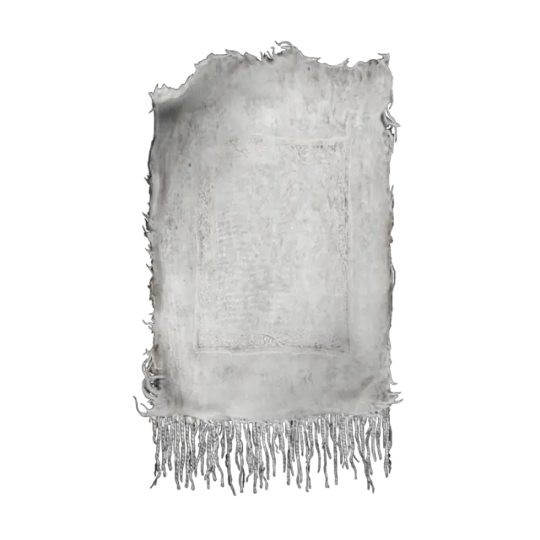
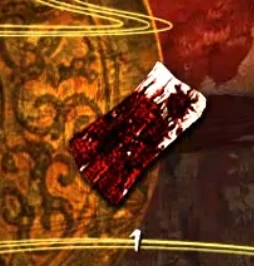

Added to this that Mohg carries a trident which is a symbol associated with Neptune, and that one of the myths featuring Neptune involves the time that he sexually assaulted the mortal woman Medusa at Athena's temple, after which Medusa was cursed by Athena to have snakes with petrifying gaze in place of her hair. One of the few depictions of St. Trina from before the Shadow of the Erdtree DLC can be found on St. Trina's torch where her hair twists like snakes.

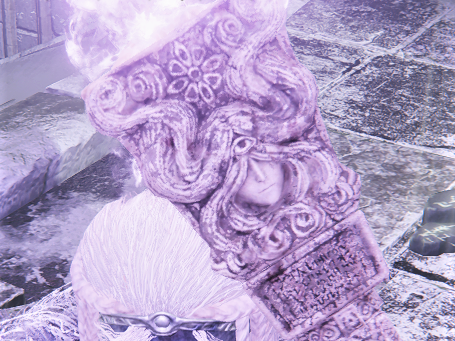
Mohg wanted to possess Miquella not as a person, but as an ideal that he can project onto. Mohg is a caricature of a nihilist - thus the emphatic shout of "nihil!". When one follows the philosophy that nothing in the world has a real existence then it follows that anyone can be be miscast in any role. Irrational evaluation based on feelings rather than the learned criteria that rational people use to evaluate the soundness of their understandings. Mohg's childhood is a distant memory, and time has smoothed away distinctions and led to the delusion where he sees Miquella as a younger version of himself.
Mohg is the Lord of Blood, and thus that makes him the Lord of Song - and I would further guess that his worldview is constructed from anything and everything that would have been popular enough to achieve hit single status on the radio. Which turns out to be a LOT of facets of human existence. People sing about love, money, sex, war, peace, politics, pop culture philosophies, Jesus, etc. This ties into the nihilism theme - in many cases a single song removed from the context of its album lacks the full information needed to interpret the artistic intent. Mohg has no strategy for evaluating whether any given messaging that he fanatically latches onto is helpful or harmful for a responsible society.
Closing Thoughts
Some words of warning to aspiring artists from a third song off the previously mentioned 7th Rush album:
"One likes to believe in the freedom of music But glittering prizes and endless compromises Shatter the illusion of integrity, yeah... For the words of the profits Were written on the studio walls And Concert halls And echoes with the sound of salesmen" - Spirit of Radio, hit single from Permanent Waves (1980) by Rush
All artists must be motivated by profits upon reaching the scale of it being a full-time job - it is simply necessary for survival. Throughout the 1900's there was the rise of the superstar in music as first radio and then recording media became more widely available and put voices in front of more people. But the mechanism for getting onto that mass physical media is controlled by people less interested in free thought and more interested in profit. Profit does not need to be mutually exclusive with making thoughtful art, but it is like a juggling act for artists to weigh what they can afford to compromise on in the race to establish a like-minded audience before start-up funding runs out.
"Integrity" is defined as "firm adherence to a code of especially moral or artistic values". A pledge to maintain integrity is a sort of assurance that the way something is now is the way that it will continue to be. This goes two ways. On the one hand, integrity is understood as anti-corruption. Ability to reject tactics that improve marketability to a new group at the expense of the original loyal base. On the other hand, a failure to compromise leads to inflexibility or stagnation. What if your initial values perpetuate harm - do you continue to cater to the original fanbase or seek to reconcile with the groups being harmed? Society around you never stops changing and making scientific advancements - do you plug your ears to new information and retreat into personal power fantasies, or do you continue to actively learn and adapt with the change?
#elden ring#media analysis#armored core#rush#fromsoftware meta narrative#if there's one thing that I'm going to be consistent about it's dissing Mohg from every possible angle#fun trivia: “The Spirit of Radio” was inspired by the Toronto radio station 102.1 Hz
9 notes
·
View notes
Text
Elden Ring and Bloodborne - What do we Learn from the Dead
I have been thinking through a dilemma regarding Elden Ring interpretation. And it occurred to me that Bloodborne addresses and engages with similar concerns.
There is a scene in Bloodborne where the player approaches Lady Maria sitting still and unresponsive in front of a clock face. The player reaches out to touch her and instead she blocks them saying "a corpse should be left well alone". In Elden Ring the player stands in a palace of blood in front of a corpse next to a woman who if she were not wearing a helmet would have a certain amount of resemblance to Lady Maria. This time Leda says "touch the withered arm", inviting you to meddle with a corpse. And I find that an interesting symmetry.

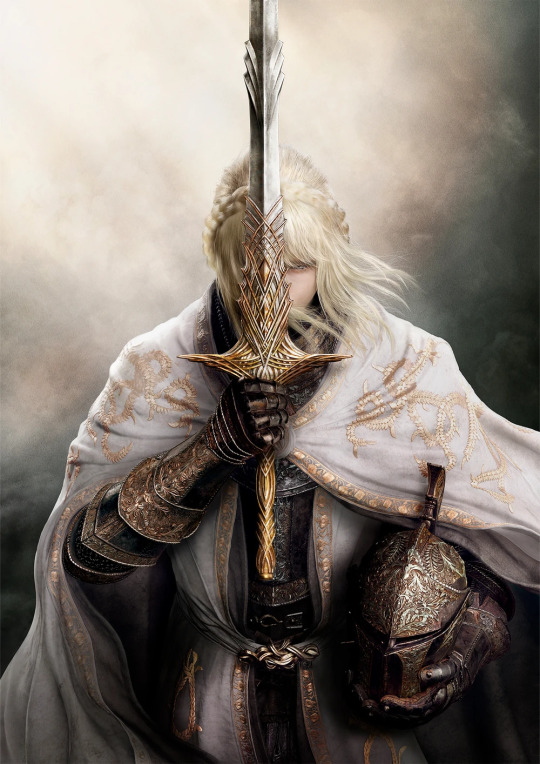
I. Dissection
Two things to note about Bloodborne: 1) Lady Maria's advice to leave corpses alone is implied to come from her experience of finding a corpse and being cursed by the knowledge that came from that incident, 2) It's very late in the game to be receiving this advice considering how many corpses the player has already tampered with. The Chalice Dungeons are for grave-robbing and the different subregions are grouped by tombstones - memorializing corpses. In fact there is a very compelling set of videos by Charred Thermos about the medical metaphor of Bloodborne, including the role of dissection.
I would go a step further and say that Bloodborne weaves together the concepts of both physical and psychological dissection.
In Bloodborne the consumable item to gain material for levelling is called "coldblood", presumably because is much older than the fresh "warm blood" obtained from killing enemies. The highest tier of this is "Great One Coldblood". But "coldblood" can also have the association of murders done pre-meditated and dispassionately "in cold blood".
There is a book called "In Cold Blood" by Truman Capote. I have read "In Cold Blood" for a book report a long time ago and I looked up some reviews to refresh my memory. It's a "whydunnit" story - the killers have already been caught and confessed. The point of the book is to interview them and to try and make sense of the why and how. It is also an example of how difficult it is to give an objective and unbiased account of motive. As this one review puts it (by Eden Gray on Google):
"I would not recommend this book to anyone. Capote claims that this book is non-fiction, however, he has changed so many facts throughout and knew one of the prisoners personally. He also had influence on the end of the book as he did have enough money and influence to prevent or prolong the hanging of the two killers, but he chooses not to as he needed them to hang in order for him to finish and publish his book. His bias comes through clearly with his anti-death beliefs and his favouritism towards Perry is blatant because Capote related to Perry. Capote manipulated his audience to feel sympathetic towards Perry even though he brutally killed the Clutters. His manipulation and deception, verisimilitude to the core, left me thinking what is true and what is false throughout the whole book, further making me disinterested as why read a book that claims to be non-fiction when it is clearly filled with false information."
I think this is the Catch-22 of non-fiction. Digging into the lives of real people is more true to life than simply inventing characters and their psychologies from old stock tropes in fiction. But if you want to tell the non-fiction story of these people then you need to be objective and factual all the way through - and this will strictly limit the ability to work in creative themes or a thesis. But being objective just becomes a boring lists of facts. Especially unlikely to be feasible if you are trying to do a story set in a historical time period with fragmentary primary sources - realism is not possible and there will be a subjective filter on everything.
As Charred Thermos describes it in this video, there is evidence that many characters in Bloodborne are inspired by prominent medical practitioners of the Victorian Era...but Bloodborne doesn't market itself as a true crime story, or even a historical fiction. They are framing themselves as "murdering" the Great Ones - the great people of the past - in cold blood and dissecting their life's work for narrative and thematic components, but they obfuscate this under layers of eldritch aesthetic.
If I had to give an example it's like this: it is known that Alan Moore's "In Hell" is a fictionalized version of the 'Jack the Ripper' murders, because he uses the names and faces of real people (which I know about from this Arcane Workshop video that explores the comic's themes alongside the game Amnesia: A Machine for Pigs). This version propagates the conspiracy theory that a specific Crown physician committed the murders - hearsay speculation that arose 80 years after the man's death when there was no-one left alive to dispute it. Nobody talks about the specific ways that parts of Bloodborne take inspiration from the wild theories surrounding the Jack the Ripper murders. Because the game only takes hints and fragments of names and the theme of committing violence against women by men who may-or-may not have some level of anatomical knowledge. Doesn't rely on the name recognition to tell the story that they want to be telling about the darker sides of humanity in the Victorian Era.
II. Discovery
How should a person feel if they are confronted with the knowledge that the character who they idealized was created from story of a single, specific human being with the identifying name scrubbed off?
The character of Lady Maria toys with this idea - the doll was made in her image, but by what is shown of their personalities they are nothing alike. How did people in the Bloodborne fandom react to this? Seriously, how should this be treated? Is it believed that the doll was made by Gherman to have Lady Maria's looks but none of her personality? Is it believed that Lady Maria has a gentle and pious side when she is not in combat? Does it change your impression of Gherman that he gives you permission to "use the doll" after knowing that this is a simulacrum of a single specific person?
I know real person fiction fans exist, but for the rest of us I feel like it would seem weird and exploitative to learn such knowledge retroactively about a beloved character. On the one hand, if a person wanted to flesh out their fanon they could go read the biography of the original. On the other hand, if new characters are being made as fictional reincarnations of the people of the past then their stories carry all of the baggage from that past. Digging through a minefield of old prejudices and heroic fantasies that aren't compatible with navigating the complex global interdependencies and ethical dilemmas of the present day.

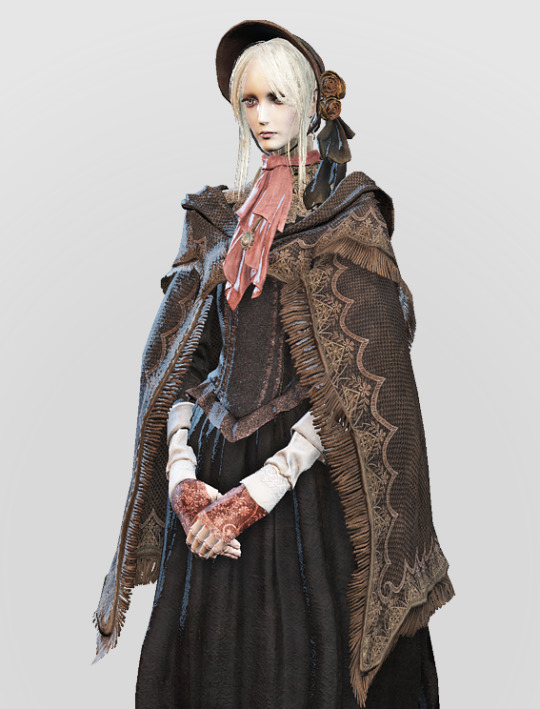
Elden Ring pulls back from the aesthetic of physical dissection and expands massively in the realm of psychological dissection. Like "In Cold Blood", it's a kind of "whydunnit" story - the stuff about becoming an Elden Lord is a red herring (perhaps even a "red HAIRing" looking at Radagon and Radahn for example). The purpose of the Tarnished is to understand why Marika shattered the Elden Ring. To understand and accept her decision as part of the process of mourning. This dissection is not done for the benefit of the dead but is for the living to learn from the mistakes of the past and do better in the future.
Marika-as-Leda invites you to the dissection of the corpse in the cocoon. This is a secret past that they were trying to leave well alone. It is generally dark and unpleasant and surreal because these are the inner fears and obsessions of a mind that struggles to tell the difference between fact and fiction. Stuck in the nightmares of a superstitious past. Recreating cycles of painful and nonsensical rituals supporting a mythology of individual exceptionalism born out of a fear of trusting that people can work together. Messmer "the Impaler" having connotations of being a vampire because an egotistical person in a leadership role is incapable of self-reflection (vampires traditionally cannot see their reflections in mirror of polished silver), and may conclude that their solution is always best despite evidence to the contrary - until suddenly everything is on fire.
In Elden Ring and the Shadowlands you can find references to the real and mythological people who served as inspiration for Marika. She's Marie Antoinette. Anne Bonny. Bloody Mary. Anna, sister of Arthur Pendragon (mother of Mordred). Mary Shelley. Marina "La Malinche". Virgin Mary, Mother of Christ. She's all of them and none of them and probably a few more that I've missed. Some of these may even have been the inspiration for Bloodborne's Lady Maria herself due to the way FromSoftware tells stories across a multiverse. But for her case - above all she is Lady Maria OF the Astral Clocktower. If you can understand the Clocktower and the FromSoftware meta-narrative, then you can understand Lady Maria far beyond what is available by the item descriptions alone. At least, now with the context of Elden Ring it's possible to understand it. Don't know if it could have been done back in 2015.
A lot of people were not ready for the revelations of Elden Ring: Shadow of the Erdtree. Not sure they'd be pleased to learn that there is a way to demystify the method below the madness of Bloodborne.
III. A Confession
So, it wasn't random chance that I connected the concept of "coldblood" to Capote's "In Cold Blood". Sometimes I do a "this day in history search" for each the dates that FromSoftware releases games and sometimes this yields interesting results. September 30 was the release date of Dark Souls 2 DLC: The Crown of the Ivory King. September 30 was also the birthday of Truman Capote. This isn't the first time an author birthday has popped up in a way that I find meaningful. Regarding themes of Elden Ring and Armored Core VI, respectively, there was John Wyndham - author of the Midwich Cuckoo, The Day of the Triffids, and the Chrysalids - on July 10, release day of Armored Core (1997). And Walter Michael Miller Jr. - author of A Canticle for Leibowitz - on January 23, 1923 which matches the release day of a game called Thousand Land (2003). And then Jack London (born John Griffith Chaney) who authored The Call of the Wild, White Fang and The Iron Heel has a matching birthday with Enchanted Arms (2006) on January 12, 1876.
And September 30 wasn't a date that I selected randomly to scrutinize next. More than ever before the Shadowland area of Elden Ring gives me the impression of a rotting old theatre where literally "the curtains have fallen" on previous eras. There's a progressive rock band for that: Dream Theatre. Combing through Dream Theatre's discography not only are there several motifs that I can see echoed in Elden Ring, but several album release dates line up with FromSoftware's previous games including "Chaos in Motion", the live video album that was released September 30, 2007 - same calendar date as the Crown of the Ivory King DLC in 2014. This is an interesting alignment because in classic writing by Virgil the Gate of Ivory is the one through which false dreams pass through.
What I'm taking away from is this: FromSoftware will not "show their work" and explain in interviews or supplementary footnotes the full scope of media and real life influences on their games. Because boasting about all of the research they did would be morally wrong - a false dream. They are in the business of making fictional characters, not exploiting the dead and putting words in their mouths for sensational name recognition. They may take inspiration from scientific concepts such as medical and psychology and various political and philosophical movements, but they won't pretend to be an authority on these things. If the player wants to fully comprehend the story then, yes, grasping at the hints of references to real world phenomena and doing your own research into those topics is a way to get there with greater accuracy.
IV. Witnesses
And how can a person know if they are correct about identifying any given influence? You can't "know", but you can build a case for it. Like how the broad strokes of complexity theory are described in this video about the 5 layers of depth in 2016 game The Witness. When understanding the logic of the game universe you want to be collecting "Witnesses" of what the narrative does and does not support. I like this idea of calling witnesses as an extension of the dissection/murder mystery metaphor - after all murder trials make use of both eye-witnesses and expert witnesses.
If I can collect 25 items containing a helix or spiral pattern and sort them according to number of twists and this vaguely follows the agreed upon timeline of history from other sources, then that tells me that the game history supports being sorted into discrete units of time and this is reflected in the art direction. If 5 of those 25 give unexpected results, then either I didn't understand the rules of the helices as well as I thought, or there is a misinformation in the commonly believed timeline. If I can collect 20 instances of suspiciously meaningfully anagrams, then that's 20 Witnesses that the game supports anagram wordplay in certain situations. If I can look to the band "Rush" and collect 7 album release date matches in FromSoft's back catalogue + 13 sets of visuals or wording similarities to specific songs then that also would seem to be 20 Witnesses that these are intentional references rather than the random noise of the universe. Maybe there is grounds to think that FromSoftware saw something inspirational in the creative or intellectual philosophy of that specific group of musicians - drawing from contemporary sources rather than solely on an outdated catalogue of classical poetry. Though to be honest I'm starting to think sometimes it's the other way around - they started with the musicians and mined their lyrics for pop culture references.
Based on collecting Witnesses, there is evidence that Elden Ring contains an elaborate reference to JoJo's Bizarre Adventure, which is itself well known for making global musical pop culture references. In Bloodborne the Great Ones convey their messages through sound.
V. Verdict
Altogether I'm feeling more confident about the relevance of the 3 additional backlogged posts that I've been working on that delve into the musical scavenger hunt of Elden Ring. But the dilemma was about whether it is right to clinically dissect and present evidence that a video game has made characters out of sensitive topics as they relate to the personal histories of specific people who are living or have living family. I guess it depends on presentation - is due respect given to the topic? Are there cases where it would be better to recommend an auto-biography or other primary source than to paraphrase? Is there something of value to be learned, or is it all just entertainment?
#Elden Ring#Bloodborne#media analysis#fromsoftware meta narrative#Having thoughts and opinions about how stories and histories are written again#I think the “In Cold Blood” English class presentation was the one that I started off with a musical clip#“my criminal mind/is all I've ever known/they tried to reform me/but I'm made of cold stone”#“my criminal mind/is all I've ever had/ask one who's known me/if I'm really so bad/(I am)”#Do people know Gowan? I guess he's a Canadian so maybe not so much
12 notes
·
View notes
Text
One thing I find baffling about people in the FromSoftware fandoms is the contradiction of these three adjacent thoughts:
Repeated elements are found in Dark Souls, Bloodborne, Elden Ring, Deracine, etc, even with commonalities as far back as "King's Field" (Moonlight Greatsword)
None of these games are written to make sense.
Sometimes a big skeleton sticking out of a cliff wall is there because it is badass. a.k.a. The repeated elements are there because Miyazaki thinks it is cool.
I dunno, have you tried making sense of things by assuming that the repeated elements are a form of internally consistent Symbolism? That repetition is the point? That maybe you're supposed to consider Dark Souls 3 High Lord Wolnir and the Giant Skeletons in Elden Ring and think about how these have a similar meaning?
In other words, I've been trying to identify why people keep confusing Absurdism with Surrealism and Nihilism. Which led to the most thorough investigation of Dadaism and Anti-art that I've done since high school.
And I think I get it now: the repeated elements are embracing the concept of the "rectified readymade". In the real world, the artefacts of any given time period that have survived to the present - the selection process of which thoughts/souls are elevated as art and dragged forwards from past to present - is significant. So why should it not be significant when enemy designs, names, attack animations, weapons, etc that already exist as made digital objects are put through a selection process and some survive to be reused?
#Elden Ring#fromsoftware meta narrative#it's a full circle overlapping “apophenia paranoia” with “it is impossible to know the game stories so stop speculating about meaning"#A work of art is composed of intentional and subconscious choices - avoiding speculation demonstrates paralyzing fear of being wrong#Belief that anything can be dismissed as potential symbolism before investigation is like believing that hieroglyphs are just weird picture
7 notes
·
View notes
Text
"If the gods saw peoples' souls but not their bodies in mirror to the way people saw bodies but not souls it might explain why the gods were so careless of such things as appearance or other bodily functions. Such as pain? Was pain an illusion from the gods' point of view?" - Curse of Chalion, Lois McMaster Bujold
The design philosophy of FromSoft's souls games (and Elden Ring) is simple: adapt the above concept from book format to video game. The players are in the role of the omnipotent god who can play and replay the game and memorize all of the pieces of how it all fits together. With effort, a person can know the past, present, and future of every character. And the pain of the player avatar - and indeed all characters - is an illusion. They are distant abstract constructs. Not real.
Where the quote says "soul" what it means is "thoughts". Narratives written from the point of view of a specific character can give an unparalleled view into their thoughts about the situation they are in. Sneaky writers can use this to show that even the worst person in a story views themself as a hero who fully believes themselves justified, even as another character identifies them as careless or a dangerous tyrant.
So the characters in the videogame are conceptualized as more than just "people" - they are souls. They are bundles of thoughts. Their affect and quest lines and naming schemes and even the directions that they are facing in game are all highly structured to convey theme, cautionary tales, or to act as microcosms of the macro forces at play. And when they die, their animating thoughts become exposed as one or more pieces of equipment that the player can take for their own use.
Counterpart to the soul, the word "body" is used less often than you'd think in Elden Ring. More often the physical form is described as "flesh". "Cursemark carved into the discarded flesh of Ranni the Witch." "As for his flesh, he gave it to me, Shabriri."
What I mean by this is that when Ranni says "this doll's body is not without its hindrances" the body in question is not the doll. When Ansbach says "After Lord Mohg's slaying at his dynastic palace, it appears his body has been absconded with. And taken straight to Kind Miquella." he is not really talking about the physical appearance of Mohg Lord of Blood that we fight.
Think of the "body" of each demigod as a world. Thoughts occupy a body and so "Elden Ring" the videogame is the body of work that contains the characters. The Lands Between itself is the body that Ranni's doll form exists within. The "Shadow of the Erdtree" is a body nested within the greater body. A game world accessed within a game world.
Important is the extrapolation of this understanding. The Shadowlands in all its hostile glory is the "body" of Mohg that we are all trampling about in - the "inner world" that he stole from Miquella and made his own. Recall that Mohg appears from nothing - he forms from the formless blood that pools out of the corpse inside the cocoon in Mohgwyn Palace. He is possessing this corpse like a demon - like Shabriri - possesses the flesh of others. But Ansbach has no obligation to tell you the history of the flesh or the body. He only says the most recent true thing because it is most flattering to his cause - that Miquella has seized control of the body that was most recently under control of Mohg. He neglects to mention that Miquella's claim to the body pre-dates Mohg's.
And Mohg, Lord of Blood, claimed the body by soaking it in blood.
“Blood is memory...Blood is who we are...Blood recalls who we were. Blood is how we will be remembered. Work it well into the womb wood.” - Fool's Fate, Robin Hobb
It's a fantastical explanation that could have been pulled directly from the Realm of the Elderlings. Blood is memory, and blood worked into the Wombwood (the chrysalis of dead dragons) allows a person to superimpose their thoughts and memories over those of the never-metamorphosed dragon. And so, many souls who experience bloody violence are trapped in the Cocoon of the Empyrean in a living death.
And whether Miquella is a victim who suffers from being drowned in blood, or whether this bloody ascension was all according to plan becomes a topic of debate for us careless player-gods. The pain of characters in a story is an illusion. What you get out of it depends on the perspective you put in.
#Elden Ring#Miquella#Shadow of the Erdtree#In RotE the reader is fortunate to be following along with people who are deeply involved in all of the magic stuff#Elden Ring captures the feeling of a person dropped in a fantasy world who simply doesn't get explained how the magic works#Also just at the end of writing this I remembered that Elden Ring literally has “Memory Stone”#Which in RotE is a black stone veined with silver and people feed their best thoughts and experiences to the stone and become 'less' by it#fromsoftware meta narrative
15 notes
·
View notes
Text
Nightreign and Meta-narrative
Marking one month until the release of Nightreign with some thoughts. So there's this tree that turned out to contain the Night 3 location for the Nightfarers, as seen in the network test:

When I was doing an investigation of Belurat back in early December 2024, I came across this curated visual in the courtyard with the Weeping Tree:

What I mean by "curated visual" is that I was standing on top of a specific game object when taking this screenshot: the right side of the bench in the west quadrant of the courtyard (i.e. the first bench to the left of the entrance). My attention was called to these benches by the one in the north quadrant that has a corpse sitting also on the right side of the bench and looking in the direction of the tree.

But anyways, at the time I had filed it away as an odd curiosity and moved on. So it was interesting when later not only was the surprise new Elden Ring spinoff "Nightreign" announced, but a similar visual turned out to be a key component of the game loop.
Back when the announcement was first made at the 2024 game awards I found it strange to see people insisting that Nightreign cannot expand upon the canon of Elden Ring. I feel that it shows a narrow definition of what "canon" is in this case.
The canon of a work of fiction is "the body of works taking place in a particular fictional world that are widely considered to be official or authoritative; [especially] those created by the original author or developer of the world"
Nightreign is unquestionably being created by the same developer - FromSoftware. And the director for the game was a section director for combat in Elden Ring. To be effective at his job he would have access to relevant internal documents as well as Miyazaki himself to consult with over what is permissible.
More content under the name of "Elden Ring" is simply another opportunity to elaborate upon parts of the art from another perspective.
Junya Ishizaki should be aware of the internal mechanism for how the Shattering War of the Lands Between is conceptualized as a clash between the various game franchises generated by FromSoftware. In other words, he would be aware that Elden Ring was always metafiction. Bringing Dark Souls bosses explicitly into an Elden Ring spinoff game just further exposes that treating these games as silos that shall never be cross-referenced with each other is the wrong approach to understanding them. On the other hand, it seems true that Dark Souls bosses are being used for fun gameplay reasons rather than having "lore" implications for Elden Ring. The fine distinction would be that these bosses transported into Limveld are not especially canon to the lore of the Lands Between as it exists in Elden Ring base game in the same way that Limveld is not actually Limgrave. Did the Nameless King exist as a person who lived and died somewhere in the Lands Between? I don't think so - it is telegraphed more that they are like nightmares invading a daydream. It's another perspective - perhaps a "what if?" scenario in the mind of someone who DOES exist as a character in Elden Ring.
Limveld
In a sense, the relationship between Limveld and the Dark Souls games that preceded Elden Ring seems to be larger scaled version of the relationship between the Lands Between and the Shadowlands. The Lands Between can be conceptualized as being overrun by twisted things crawling from the Shadowlands - like Fingercreepers, Tibia Mariners, Death birds, etc. The Shadow of the past stretching over the present. As well as inter-dimensional echoes in the form of NPC and PC Invaders.
Limveld is similarly a liminal space being invaded by echoes from the past. Invading from the Dark Souls, which are FromSoftware's previous game releases that simply will not "die" as long as there are people out there still buying and playing and thinking about them. Conceptually - from what I've seen so far - it reminds me of the Net Slum area of .Hack//sign. Corrupted data that refused to be properly deleted has been haphazardly thrown together. Acting as one of the final obstacles to foiling the plans of a formless entity (Nightlord) that fears being replaced by the next generation artificial being that it has been the caretaker of.
Otherwise, do I expect to be able to read the environment in Nightreign the same way that it works in the base game and Shadow of the Erdtree? For example, these long examinations of the Belurat Courtyard and Belurat Gaol? Not really - due to the time limit and reported procedural generation element I find it unlikely. This does depend on whether there is true randomization of structure/map layouts or a fixed number of curated possibilities.
Do I expect the Nightfarers and Nightlords to expand upon or make more explicit some ideas planted in Elden Ring, using the parallel worlds / string theory concept that FromSoft has been using basically since the beginning of their body of work? Yes, I believe that it already has done this. What I'm interested in looking for are the keys to ciphers set up in previous FromSoftware games.
The fragment "veld" is an alternate spelling of the word "veldt", which is an "open, uncultivated country or grassland in southern Africa." Some years ago I was listening to a Weird Fiction podcast and one of the stories that left a lasting impression was called "The Veldt" by Ray Bradbury. It is a science fiction story alternatively titled "the world the children made". In a society with advanced visual hologram technology the children of a family are found to be repeatedly requesting a scene of the African Veldt where lions hunt and kill prey. It is revealed that the "prey" that the children have programmed to kill in these simulations are their own parents. And then the hologram does something it was never thought possible to do and the "virtual" lions kill the real parents and devour them. The children are fine with this.
So remember that Belurat courtyard? There's something else surrounding the tree: 8 pedestals for horned lion statues. Two of the pedestals are occupied, the third has a broken lion, the next 4 pedestals are empty, and the 8th pedestal is itself broken. 8 Lions for 8 Nightfarers, perhaps? Some kind of monument was being constructed here, but abandoned partway through, which synergies with the way that the Nightfarers are called "seekers of redemption". Perhaps they seek to repair the broken story. Or perhaps by defeating the Nightlord they are exorcising the broken story like it's a persistent ghost in the machine.

Expanding upon the Bloodborne meta-narrative
Because I truly spend too much time thinking about the silly way that FromSoftware may or may not be cultivating the release dates of their games, I did this check for Nightreign as well.
The release date for Nightreign is advertised as May 30th, 2025. On May 30, 2011 the American New Wave band Blondie released their 9th studio album "Panic of Girls". In a previous post - which also released before Nightreign was even revealed - I wrote extensively about my reasons for thinking that the music of Blondie was a core piece of influence for the character of Lady Maria in Bloodborne, among other related topics. Shall we compare the album cover of "Panic of Girls" to the design of the Duchess - who was immediately clocked (pun intended) by FromSoftware fans as a bootleg Lady Maria in terms of aesthetic and play style?
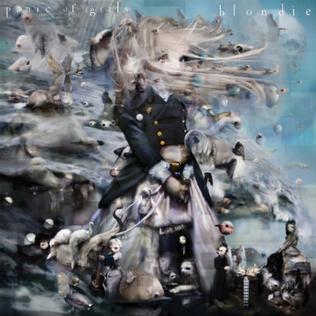
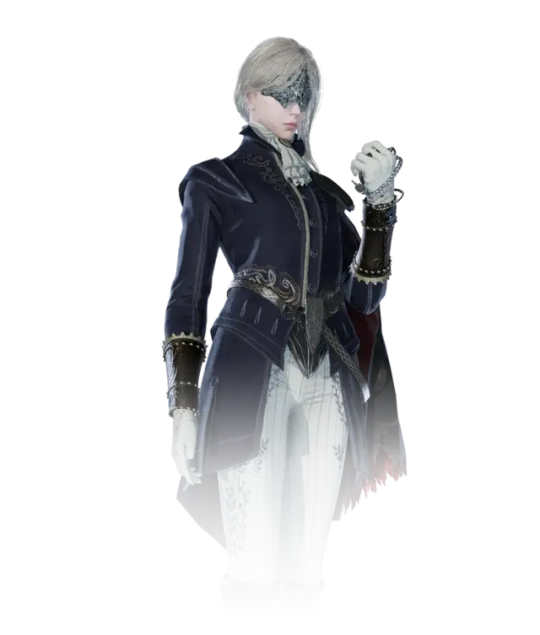
Not an exact match of course, but sharing those common elements of blonde hair, dark jacket, and white lower body. And the realization that Lady Maria might be conceptualized as the "lion" of Bloodborne was a crucial piece of context that I was missing for deconstructing the meaning of the astral clock - but that is a story for another day.
(Also the Recluse's "Song of the Blood Soul" adds yet another example where the concept of "blood" is musically themed in both Elden Ring and Bloodborne.)
#elden ring#shadow of the erdtree#Nightreign#Also regarding Recluse I should really finish my Elderlings post that I started months ago#fromsoftware meta narrative
5 notes
·
View notes
Text
The Multi-Faceted Gloam Eyed Queen
So one of the principles of Elden Ring is history repeating, especially with regards to Miquella. For this reason, I've recently been wondering if Malenia is a kind of proxy for the Gloam Eyed Queen.

Things that we could learn about the Gloam Eyed Queen if this is the case:
The Haligtree site was formerly the GEQ's domain and/or a place that the GEQ visited and uncovered something even more ancient embedded in the roots. It is where Malenia is found and fought. Essentially, Malenia's Rune would be an in-universe way of conveying that the story she claimed is the story of the Gloam Eyed Queen, who is a mysterious a figure because the records of her exploits were poorly kept and have rotted away.
Farum Azula can be seen from Malenia's isolated Divine Tower. Godskins of the GEQ are also found there. Basically adding strength to the fandom speculation that Farum Azula was within the domain of the Gloam Eyed Queen - though I suspect that it more likely originated as a domain for the God of Rot found at the deepest origins of the Great Rune. Critically, Farum Azula was uprooted by a twister and it is not impossible that the Haligtree site was believed to be one of its former locations - perhaps even the earliest (another site with good environmental clues is at the Woodfolk Ruins). In very early maps of the game the Haligtree itself was not in the Mountaintops, but instead south of Liurnia/Limgrave.
The GEQ went on a campaign of death around the continent starting from the north and going around to Caelid. This is corroborated by the way that Godskin related stuff is scattered in almost every region, and the Godslayer Sword locked away in Caelid.
Malenia and Radahn's battle would be a proxy match for the Gloam Eyed Queen vs Godfrey - presumably ending the campaign of both.
Millicent would portray the origin of an earlier depowered form of the Gloam Eyed Queen - a proto-GEQ or an amnesiac splinter of a former Goddess mentored by a Sage in the ways of Unalloyed Gold. This seems to pluck at and even older version of the conflicts between GEQ vs Godfrey and Malenia vs Radahn which occurred in the days of Siofra: The God who would one day become the God of Rot itself vs the Sun God that would later be known as the Fell God. Essentially, speculating that Commander O'Neil is fighting on the site where his ancestor faced the goddess of Rot (Millicent's sister "Polyanna" being available for this fight).
The Shaded Castle venerates Malenia in the present, but is implied to have been around for a very long time. Perhaps they previously were an ally of the proto-GEQ - responsible for "arming" her with certain weapons or tools similar to the way that Millicent is "armed".
The Godskin Swaddling Cloth being found in the Spiritcaller Cave implies that the GEQ travelled there, but that it was also where the practice of new conversions to her cause ended (the talisman was discarded here). Millicent also takes a detour to the Mountaintop of the Giants, and identifies Castle Sol as holding the key to the Haligtree. Sol = Sun = Flame of the Fell God. Similar to the Fire Giant having a weak leg, the Peg-legged Commander Niall is also serving as a Fell God proxy here.
The idea of identities breaks down a bit here, because it is implied from the One Eyed Shield that Marika was personally responsible for doing something believed to have slain the Fell God, and from other context elsewhere Hoarah Loux / Godfrey was the main driver of the campaign against the giants. So it would be contradictory to outright claim the GEQ as responsible for defeating the Fell God. However, in the Shadowlands Miquella has a configuration of 4 arms (although one is faded). Which similar to Ranni's four arms is reminiscent of some Hindu deities - an immensely confusing mythology where all of the gods seem to be portrayed as different aspects of each other and also there are many conflicting sects. Of specific note is four-armed Kali - blood drinking goddess of death and time, who wears a tiger pelt and necklace of severed heads and rides a lion into battle, and is also described as the black fire tongue of the fire god Agni. Kali is also generally understood as another aspect of the mother goddess Parvati and the animating force of the male god Shiva (Parvati's husband). Previous post describing Kali connections in greater detail.
And then there are the alternate universe versions to cross reference. The main angle of approach for this is following up on other appearances of the Valkyrie motif.

In Dark Souls 3: Ashes of Ariandel DLC there is the similarly eye-blind and similarly Valkyrie themed Sister Freide (or "Black Flame" Freide). Freide = Friday = Freya. This is the largest hint that the GEQ is paradoxically both jailor and pawn of the Fell God - Father Ariandel being chained in a secret room beyond Freide and his bowl of Embers having synergy with both the Fire Prelates and the Fire Giant who fights with the lid of a bowl (the forge). The DLC is also a snow world with themes of rot and blood similar to the Consecrated Snowfield (depending on whether proceeding to the Haligtree or taking the Mohgwyn Palace portal).
In Dark Souls 2 there is the Duke's Dear Freyja, and - aside from this boss being a big spider - it does maintain the theme that the "Freya" character is typically understood in context of a male character. I had a previous post speculating on the significance of spiders to the Haligtree.


In Dark Souls 1 the "Duke" is Seath the Scaleless who is implied to be the creator of half-breed Priscilla. Similar to Sister Freide, Priscilla is end boss of a Painted World - and the connection is strengthened by the wooden half-dragon statue covered by a rotted fur cloak that is found in Freide's arena. The Moonlight Greatsword is obtained by cutting off the tail of Seath the Scaleless - this is relevant for the next entry.


An entirely different portrayal in Demon's Souls where Selen Vinland wears the gold-winged helmet and armor similar to Malenia. Original on left and remake on right. She seeks to send a message to a younger brother named Garl Vinland who guards a helpless blonde woman named Maiden Astraea. Garl's silver helmet is smooth faced with no visible eyeholes and has a large crest that seems to imply that a conifer is the symbol of the houses of Vinland. Maiden Astrea lore indicates that she tends to the plague-stricken and diseased people of the Valley of Defilement and can be slain to obtain a Pureblood Demon's Soul, but when attacked may relate with a spell obtained from the Dragon God Demon's Soul. Give Garl's Crest to Selen and with low faith she returns "Dark Moon Grass". At faith above a certain threshold she returns a silver "Ring of Devout Prayer" which can be obtained in two alternate ways: 1) dropped by Saint Urban, 2) trade the Large Sword of Moonlight to a crow. Selena own equipment includes a unique curved sword named "Blind" which similar to the Large Sword of Moonlight (and no other sword in the game) has the ability to ignore shields.
I have guess for Bloodborne, but my understanding of that game is not complete so I'll reserve that one for now. Similar for Armored Core 4.


In the Shadow of the Erdtree, Freya is a golden warrior and former gladiator. A member of Radahn's army - but it was both Godfrey and Radagon who have themes of being former gladiators and Shadow of the Erdtree itself establishes Radahn + Miquella as a proxy for Hoarah Loux + Serosh. Her identity in generally is very confused with multiple eras and characters getting mixed up.
I wonder if Metyr's role is to be a GEQ imposter or mimic. Essentially a misinterpretation of the GEQ's narrative that does a Freudian slip and lingers too much on the "mother" aspect. There are no spiders in Elden Ring - again as discussed in a previous post - but the many finger creeper enemies are like a facsimile of spiders.
#elden ring#media analysis#fromsoftware meta narrative#I need a new name for parallel universe connections#character Sudoku#overlap them all for the true GEQ#Also Freya and Venus were syncretized#and Malenia's nude appearance as goddess of rot has thematic resemblance to the classic painting “the Birth of Venus”#And in Japan Venus is the gold star
2 notes
·
View notes
Text
"O Flora, of the moon, of the dream."
So I decided to explore what it could mean that the Doll in Bloodborne references a "Flora" in connection to the moon. Essentially tracing several connective threads down lines of inquiry related to the Flower Moon.
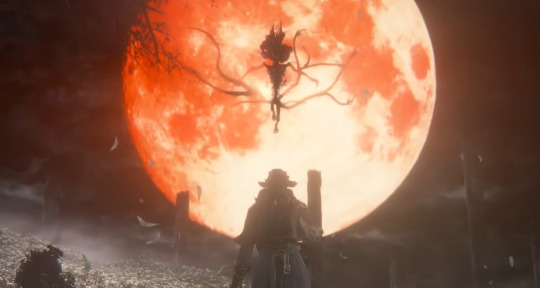
In a way, this is a follow up to my previous post "Elden Ring and Bloodborne - What do we Learn from the Dead". For context: under certain conditions the doll may kneel in front of one of the gravestones in the Hunter's Dream and say the following prayer:
"O Flora, of the moon, of the dream. O little ones, O fleeting will of the ancients. Let the hunter be safe, let her find comfort. And let this dream her captor, foretell a pleasant awakening. Be one day, a fond, distant memory." - Peculiar Doll
Data mining has confirmed that there are 2 conditions that may trigger this, so long as the Hunter's Nightmare has not yet been accessed but the blood moon has been triggered: 1) At Hunter's Nightmare gravestone, or 2) In a New Game + cycle, directed at the Hunter's Gravestone that appears only if the "Yharnam Sunrise" ending was previously selected (in which the player is beheaded by Gherman). Further, there are indications that "Flora" was the name of the Moon Presence in earlier versions of the game.
Xtha-cka Zhi-ga Tze-the, the Killer of the Flowers Moon
It is traditional among native people of Turtle Island (more commonly known as North America) to assign names to the moons of the year based around notable benchmarks in the changing of the seasons. There is no codified system that spans all peoples - it varies by region. The Farmer's Almanac adopted the system of naming moons as inspired by this practice and similar European traditions that pre-dates the Julian calendar. But this is both generalized to apply to a wider area and includes the biases of Colonial America that do not always harmonize with the origins of the tradition.
'Killers of the Flower Moon' is a 2023 movie based on a 2017 book that got its title from a 2009 poem by Elise Paschen about the 1921 murder of Anna Kyle Brown in the first of what would be known as the Osage Reign of Terror. A conspiracy generally masterminded by rancher William Hale to secure land and oil rights. This was considered to be the first major murder case of the FBI. Actually, the title of the book and movie muddle the intent of the poem in a subtle way (though the explanation is provided in the first few pages of the book). In Osage it's "Killer of the Flowers" Moon because this is the time of year when a late frost may arrive and kill young flowers.
So now I intend to suspend disbelief and consider the metanarrative. Because in my experience, FromSoft has been extremely attentive to the dates when their games are released. Some hints of this are in the ways that the phases of the moon in real life at date of release match the moon phases observed in game for Sekiro and Elden Ring. Recently much emphasis was placed on the number "621" in Armored Core VI and release day of Shadow of the Erdtree, considering that the only time they have ever released a game on the exact day of a solar eclipse was Forever Kingdom in 2001 on the June 21 summer solstice. In fact, before Shadow of the Erdtree, the only Fromsoft game ever released on the day of a full moon that I could find - out of 80+ games - was also on the day of a blood moon. This will come up later.
There have been 4 games in the history of FromSoftware that have been released during part of a Flower moon/Flower Killing Moon cycle. That is, when the May moon is either waxing or waning:
Lost Kingdoms (Rune) 2 - May 22, 2003 (Last Quarter - Aquarius)
Nanpure VOW (Sudoku) - April 26, 2007 (Waxing Gibbous - Virgo)
Iraroji VOW (Picross) - May 24, 2007 (First Quarter - Virgo)
Dark Souls Remastered - May 24, 2018 (Waxing Gibbous - Libra)


One notable observation is that May 24th appears twice. Another is that Nanpure VOW and Iraroji VOW actually are for two different May moons - the second one is a Blue moon. And it is an outlier in the FromSoft catalogue to be making these sudoku and picross games to begin with - a puzzle game genre that had not been touched before or since. A similar outliner is seen in 2009 with FromSoft publishing 2 visual novels playing through the cases of famous Japanese fictional detective Kosuke Kindaichi - The Inugami Curse and The Village of 8 Graves.
So why emphasize May 24?
Q. How do you Solve a Problem like Maria?
A. With the Sound of Music
There could be multiple reasons. In Canada May 24 is Queen Victoria Day (French: Fête de la Reine, lit. 'Celebration of the Queen'), as it was Queen Victoria's birthday and she was the Mother of Confederation for Canada.
But there is an odd pull that I want to dig into because it ties in quite well with the musical themes of Bloodborne: On May 24, 1982 the funk/art band Blondie released their 6th album titled "The Hunter" under label Chrysalis and recorded at New York studio "The Hit Factory". The 11th song on this album is a cover song titled "The Hunter is Captured by the Game". Studio not to be confused with "The Hit House", which is the indie publisher who collaborated with Ruby Friedman to create the song "Cut You Down" that appears to have been commissioned for the Bloodborne trailer released March 19, 2015.
The two best known Blondie songs otherwise are "Heart of Glass" (from 3rd album Parallel Lines) and "Rapture" (from 5th album Autoamerican). Heart of Glass is about being in a fragile emotional state that is easily left broken hearted, and also I note that for all of the various organs represented in Bloodborne not one of them is a heart. Rapture is about, well, I don't think paraphrasing does it justice:
"And you drive all night and then you see a light And it comes right down and lands on the ground And out comes a man from Mars And you try to run but he's got a gun And he shoots you dead and he eats your head Then you're in the man from Mars You go out at night eatin' cars You eat Cadillacs, Lincolns too Mercurys and Subarus And you don't stop, you keep on eatin' cars Then when there's no more cars You go out at night and eat up bars Where the people meet"
Which upon doing linguistics translates to a hit list for: the founder of Detroit in Michigan (Antoine de la Mothe Cadillac), a Village of Lake People (Lincolns), Quicksilver (Mercurys), and the 7 Sisters Pleiades Constellation (Subarus). Blondie's 7th album is called 'No Exit' inspired by the Sartre play of the same name ("L'enfer, c'est les autres") and was released in 1999, of which the hit single is titled 'Maria'.
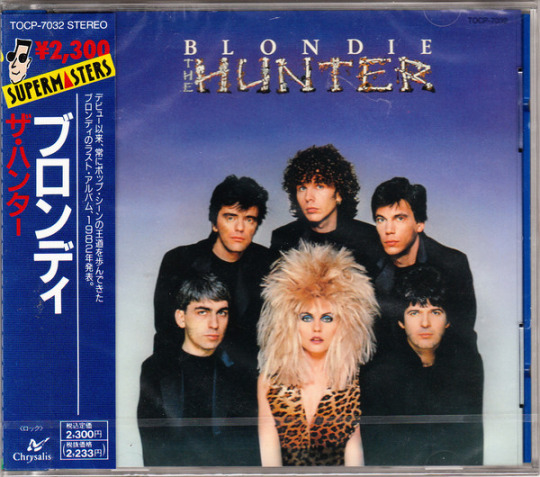
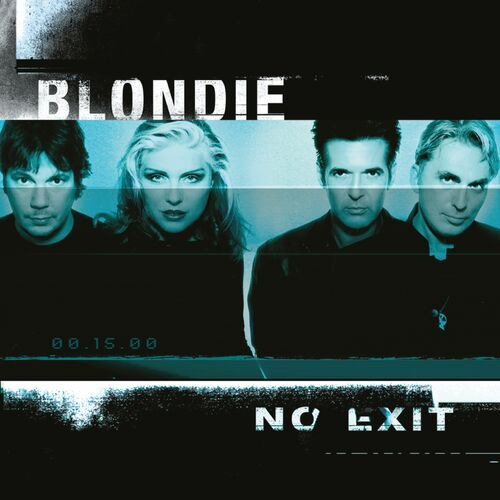
The City of Detroit is itself on the traditional lands of the Potawatomi and Miami native peoples, among others. It was founded in the early 1700's and one of the first structures constructed was a chapel to St. Anne. The land upon which Fort Detroit was built was reluctantly ceded by the coalition of Native American tribes known as the Western Confederacy (led by Little Turtle) in 1795. Fort Detroit later burned to the ground on June 11 1805, with the fire rumored to be started by hot pipe ashes that a baker has dropped in his stable. On the other hand, the Treaty of Detroit later acquired more land rights for additional territory in the Michigan basin and on the US side was signed by a William Hull.
I'll address the "man from Mars" later but what stands out for me here is that Antoine de la Mothe Cadillac may be correlated to the founding of Yharnam (which would later burn down in a fire as a consequence of an ashen disease), Village of Lake People to the Fishing Village, Quicksilver to the creation of bullets that can repel the beasts. The 7 sisters is something I'm still picking over - I suspect that cross-referencing other FromSoft games may help with this one. And I've also noted that quite a lot of the female characters in the game share fragments of their names with each other and with Annalise.
For Annalise herself, I suspect that the connection to the brutal Osage killings might be relevant, partially because of the specific use of the term "Reign of Terror". This was previously used for the period of time when Queen Marie Antoinette was beheaded. According to this article, Cainhurst Castle may have been inspired by Bran Castle in modern day Romania, former Transylvania. Marie Antoinette's mother was Maria Theresa, who was sovereign of the Hapsburg domains for 40 years - including Transylvania - and the only woman to have held this title in her own right.
The Greater "Will"?
And another thing: multiple significant "Williams" have been coming up in these historical dives tangentially connected to Bloodborne. I suspect that Master Willem in the nexus for these especially after considering this next one: Sir William Gull, a physician active between 1842 and 1887.
Sir William Gull was a court physician for the Prince of Wales and received his knighthood for curing the prince of typhoid fever (typically contracted by eating food contaminated by feces - sanitation was pretty rough in the 1800's). His best known work includes investigation into the spinal cord and causes of paraplegia, being the first to describe anorexia nervosa and identify it as a psychological condition, and investigation into the effects of atrophied thyroid gland in women (cessation of periods, roundness of face, sleepiness, and indifferent attitude).
The association with the spinal cord is of particular relevance to Bloodborne considering 3 factors: 1) the Yellow Backbone item that can be used to modify chalice dungeons and is also dropped by "The One Reborn" 2) the prevalence of wheelchair-bound enemies, and 3) collecting and consuming umbilical cords allows the player to become immune to the fate of being placed in a wheelchair bound state by the Moon Presence - umbilical cord blood is rich in stem cells and the use of stem cell therapy is proposed as a means of repairing spinal cord damage. Alongside the topic of human cloning (which was partially covered in this BobbyBroccoli video), the ethics of stem cell research was a topic of debate in the early 2000's. There's a 2002 Dream Theatre song about this zeitgeist.
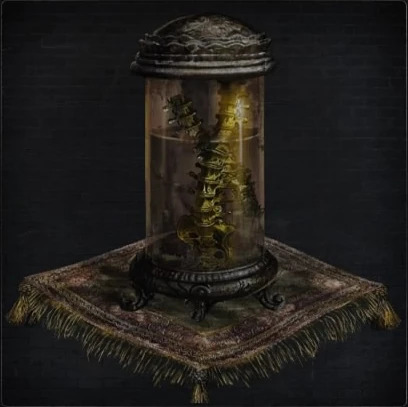
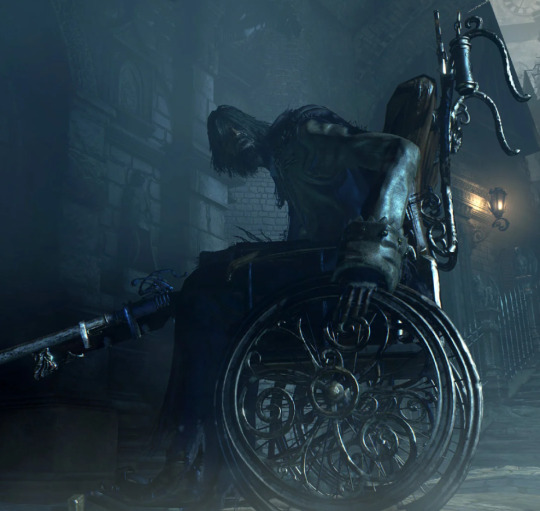
Also here are some of my favourite quotes from Sir William Gull which seem topical:
"Fools and savages explain; wise men investigate." William Withey Gull – A Biographical Sketch (T. D. Acland), Memoir II.
"The foundation of the study of Medicine, as of all scientific inquiry, lies in the belief that every natural phenomenon, trifling as it may seem, has a fixed and invariable meaning" Published Writings, "Study of Medicine"
"Realize, if you can, what a paralyzing influence on all scientific inquiry the ancient belief must have had which attributed the operations of nature to the caprice not of one divinity, but of many. There still remains vestiges of this in most of our minds, and the more distinct in proportion to our weakness and ignorance." British Medical Journal, 1874, 2: 425.
The fictionalized (and unjustly defamatory) version of Sir William Gull is suspected of being Jack the Ripper based on a conspiracy theory. The most popular version of which is in the Alan Moore comic "From Hell". This is the 4th time the concept of "Hell" has come up in connection with Bloodborne. Another as previously mentioned was in the Sartre play No Exit through a Blondie album, where "Hell is other people". What I did not mention at the time is that this is the opening lyric to the song "Cut you Down" from the Bloodborne trailer:
Your blood's gone bad I knew it would The devil killed And yet you're back for good
And fourthly, Bloodborne released in the year 2015. In tarot, the 15th major arcana is The Devil, and I have extensively deconstructed the way that Elden Ring exposes FromSoftware's use of tarot.
"If you show someone their future, they have no future. You take away the mystery, you take away hope." - Paycheck, 2003
And if this seems to be bouncing around a lot and grasping for barely connected straws, it gets more complicated. Because there is the astral clock-as-time machine to consider. On December 25, 2003 the movie 'Paycheck' released on the exact same day as a FromSoft game called Ootogi, Myth of Demons 2: Immortal Warriors. The movie was based on a Phillip K. Dick novel of the same name so from the perspective of intentional release date matching it would have been easy to guess the plot ahead of time.
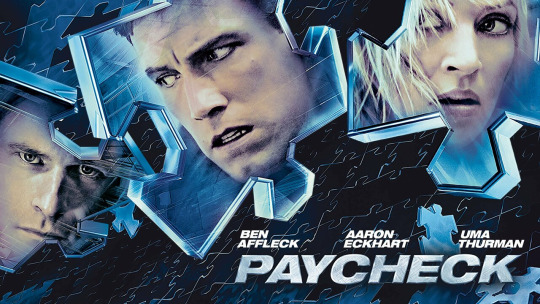
Essentially what happens in the movie is that a programmer is contracted for a 2 year job after which his memory will be deleted to preserve confidentiality. But instead of payment or the personal effects he remembers submitting he receives a package of random objects that his more knowledgeable pre-memory-loss self had left for him, which he soon finds out are exactly what he needs to evade various situations that happen.
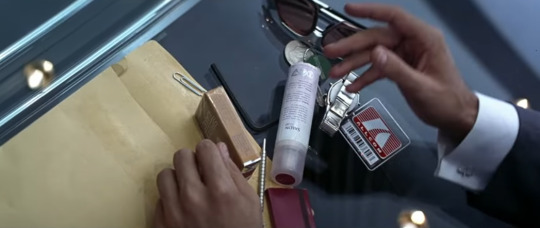
And now he needs to solve both the mystery of what exactly he has been doing for the past couple years and why people want him dead. Turns out he was building a machine that predicts the future and realized at about the end of the project that this was a pretty bad idea:
"The machine predicts a war - and we go to war to avert it. It predicts a plague - we herd all the sick together, create a plague. Whatever future this predicts, we make happen. We give over control of our lives completely. I did this… Seeing the future will destroy us."
On my FromSoftware timeline the release of Armored Core Nexus on March 18, 2004 is basically the last date before observations go non-linear and fragmented. The backbone of the whole thing remains consistent - Armored Core games follow astrology like clockwork. That's the problem I assume: one revolution of a clock lands you right back where you started. The tragedy at the end of the procession of stars (see: Shadow of the Erdtree) is that the future is the same as the past and there is no hope for change.
"Attention all Planets of the Solar Federation.
We have Assumed Control." - 2112, Part VII
March 18 is also the release date of the 1st album of progressive rock band "Rush", under the label Moon records. This is surrounded by two other instances in extremely tight timeframe that I find very difficult to believe a coincidence: 1) January 14, 2004 is the release of King's Field mobile and the anniversary of the 7th album Permanent Waves (some standout songs: Entre Nous "we are planets to each other", and Closer to the Heart), 2) April 1, 2004 is the release day of Kuon and the anniversary of the 4th album 2112 ("The Twin Moons, just two pale orbs as they trace their way across the steely sky....We have had peace since 2062, when the surviving planets were banded together under the Red Star of the Solar Federation. The less fortunate gave us a few new moons.").
Points to note: the cover for 2112 would establish a red star as the symbol of the Solar Federation - Mars is the "red star". Mars is also likely associated with Formless Oedon as described briefly in this previous post. This album also generated the "Starman" logo for Rush which features "the abstract man against the masses". Second, Rush's international label for their first 4 albums was Mercury Records - perhaps sufficing as the Mercurys eaten by the man from Mars. Which is setting up a conflict in which the band Rush is eaten by the Man from Mars but also fighting from within. And who else would they be fighting on behalf of but the Man Woman in the Iron Mask: Queen Annalise. Rush as a band is a trio, and sometimes talked of themselves as "The Three Musketeers" as said by Geddy Lee himself in his auto-biography "My Effin Life" (and it also is the headline of a 1984 interview).

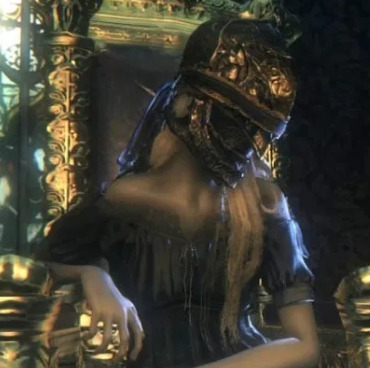
This whole extended reference does get more complex, as these matches suggest a pattern. Albums 7, 1, and 4 are seen here, albums 3 and 6 will turn up matching the dates of other games, and two compilation albums will match other dates for 7 total. The calendar date match with the 3rd Rush album is Armored Core V Verdict Day on September 24, 2013 - it features the song "Bastille Day" about cutting off heads. And that's it. A heavy skew towards the 1st 7 of 19 Rush albums.
It is at this point in time that I find it necessary to address the Blood Moon. Because the next released FromSoft game is Armored Core Nine Breaker on October 28, 2004, which happens to be the day of a lunar eclipse, a.k.a. a Blood Moon. Which is made more significant by the way that FromSoft basically never releases games on the day of even normal full moons. I imagine there is a reason for this: You're not supposed to do bloodletting or surgery on the day of a full moon. Especially not for the body part associated with that moon according to a complicated system of arithmatic. This particular moon was in the phase of Taurus, which governs neck, throat, and vocal chords.
And I know a few other details about the release of Bloodborne on March 24, 2015. It falls 4 days after a solar eclipse which looked like this as seen from the UK (i.e. the general setting of Bloodborne).
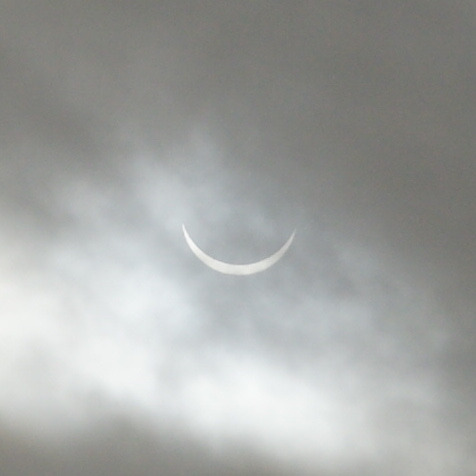
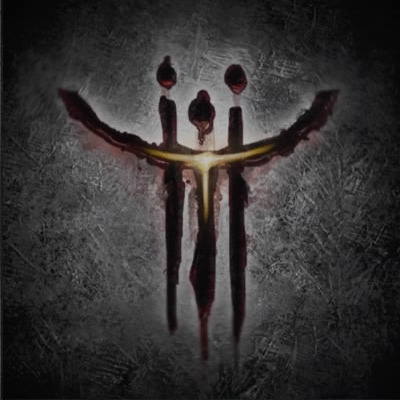
And 11 days before a blood moon - which again was governed by Taurus. Not just any blood moon, but the third in a tetrad that some religious folks were very weird about according to the google image search.
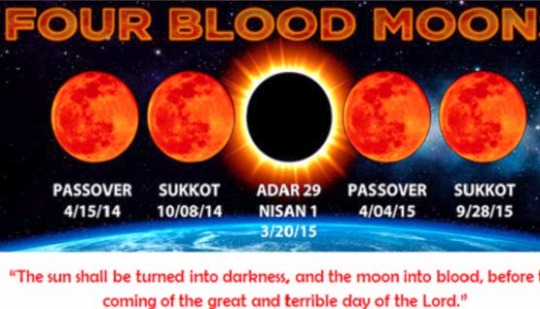
Back to the flower moons and/or killing flower moons. I don't know what's up with April 26th. After searching the discographies of a dozen or so bands based on vibes, nothing has come up yet for that date. Some potentials came up in a "this day in history" search but that's not something I want to work through right now. I do have an opinion about May 23, 2003. In my searches for the origin of the phrase "Judy's Comet" as used in the first Armored Core game, I encountered a lullaby song written by Paul Simon named "St. Judy's Comet" and it occurred to me to associate it with Lost Kingdoms II. For sheer coincidence in the small window of time that I was looking at both game and song they had initial release dates listed as May 22, which on reviewing various corrections is the incorrect date for both, but on the other hand I'm more open now to considering indirect references (similar to what was followed through with Blondie above). In this case, the most likely link would be that Armored Core IV: Fires of Rubicon released on August 25, which was the same calendar day as Paul Simon's "Graceland" album released in 1986 - his 7th and most successful solo album. Also the song Scarborough Fair was used in Déraciné, of which a very well-known version was recorded by the duo Simon and Garfunkel.
But regardless of nebulous date matching, what I find appealing about St. Judy's Comet is that 1) It's a lullaby released under the dominion of a Flower Moon. 2) It's about a saint. 3) Mergo = "Me ergo" = I think, therefore I am the 3rd tone of a musical scale. 4) It's ultimately an incorrect retcon of the original Armored Core emblem - most likely the "Judy's Comet" that was actually referenced in that game was the Japanese WWII plane named "Comet" that was reported as "Judy" on the Allied side (edit: or maybe not incorrect! Armored Core released closely after the mecha anime Gundam Wing, which features a faction called "OZ" or "Organization of the Zodiac" which has a secondary Wizard of Oz theme). Which sums up to an impression that Mergo has some themes of "St. TRIna", who is similarly representing a retcon to an idealized past that never existed. Mergo is a maddening auditory hallucination that doesn't exist.
The "Third Umbilical Cord" is itself a musical reference. In one musical theory the circle of thirds helps to organize pitches. However, "umbilical" is a word that can also be applied to the end caps of a scroll, which are rolled up in a spiral. A more complex musical theory follows the spiral array model as an algorithmic process for using ascending spirals to select musical chords made of 3 notes.

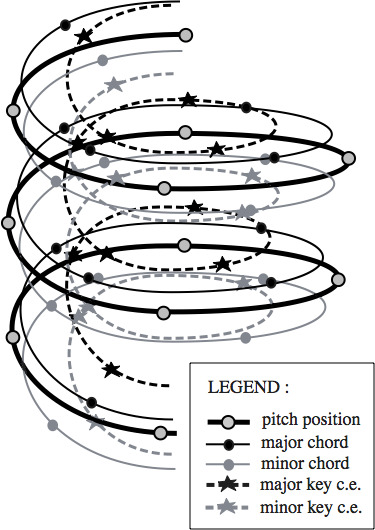
So why single out these three musical acts in relation to Bloodborne - Blondie, Rush, and Paul Simon? Is there a common connection between them? Yes, actually. All three performed at the Hammersmith Odeon in England. Oedon = scrambled Odeon = scrambled "singing place". With "hammersmith' showing that even in a game without a blacksmith somehow there is a blacksmith after all.
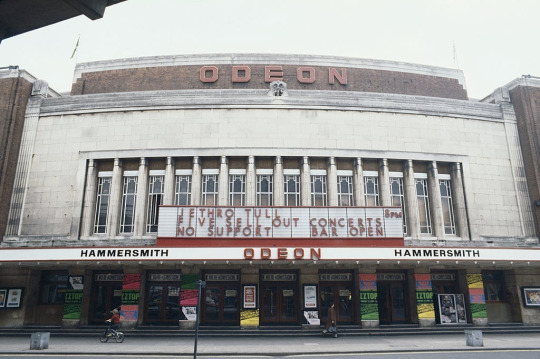
And on the topic of hammers, Oscar Hammerstein II - son of theatre owner William Hammerstein - was the lyricist for the Sound of Music musical referenced briefly above. Something to put a pin in for future reference is that this was his last major work - he was afflicted with stomach cancer and died less than a year after the premier.
So is the Moon Presence Really Named Flora?
Yes and No.
"O Flora, of the moon, of the dream. O little ones, O fleeting will of the ancients. Let the hunter be safe, let her find comfort. And let this dream her captor, foretell a pleasant awakening. Be one day, a fond, distant memory." - Peculiar Doll
I would imagine that the moon that the doll is referencing is either the May "Flower Moon" of the Farmer's Almanac or the August "Yellow Flowers Blossom Moon" of the Osage. Or both is possible. Lumenflowers in Bloodborne have the form of the typically-yellow sunflower, but their colour is instead a pale blue. One of the other blue moon matches occurs in August, with the release of Dark Souls Prepare to Die edition in 2012. So that would make it another blue moon: "Blue-Yellow Flowers Blossom Moon".
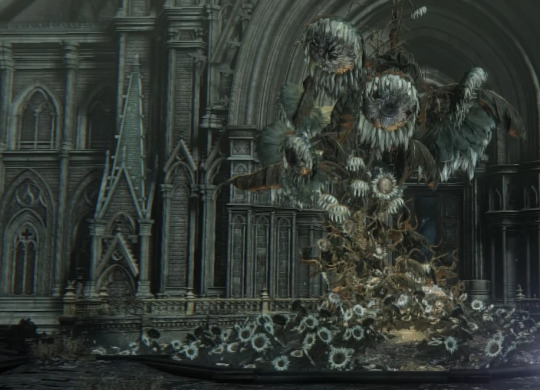
"Flora" is mentioned by the Doll, Lumenflowers (pale blue sunflowers) are placed in front of the astral clock, Nanpure VOW and Iraroji VOW are twin games with different moons, Lady Maria and the Doll are twins. That would seem to make the Doll a proxy of the "Blue Killer of Flowers Moon", and that Lady Maria has a link with the Killer of Flowers moon as frost is what kills the flowers and she is distantly related to the frost-covered Castle Cainhurst. But the doll will only say the prayer after the blood moon rises, as if it was that occurrence that caused the Moon Presence to shed a former identity and adopt a new one.
For the antagonistic Moon Presence the answer may be deceptively simple: The Hunter's Moon. That one time in the history of FromSoftware that a game was released on the day of a blood moon on October 28, 2004 it would have been a Hunter's Moon according to the Farmer's Almanac. The day that a bloodletting operation gone wrong resulted in damage to vocal chords, and the ensuing discordant noise led to confusion among the Hunters as to what they were even seeking to hunt for. And the only Flower moon before this would have been attached to Lost Kingdoms 2 on May 23, 2003.
There is no Great One in Bloodborne which resembles a heart, but the Moon Presence has the appearance of a circulatory system forming a lion's mane, gaping open ribcage, and prominent exposed spine. The Hunter Moon is likely seeking the same thing that the Hunters have lost: a "heart". And the player acts to fill the void of that missing heart for as long as they continue to play the game through new cycles - which is what is conveyed in the ending where the Moon presence presses the player to its face and then they take the place of Gherman. The dream is the game is the captor. "The Hunter is Captured by the Game".
Where to Go Next?
I have seen speculation that the stories of Yharnam, Kos, and Annalise are connected. I suspect that this is correct but the mechanics of "how" probably involve digging even deeper into the stacked layers of history/chalice dungeons/umbilical chords which is too big of a task for now. At a guess it builds on the concept of "Hell is other people" in such a way that a lot of the monsters have a specific human elsewhere in the game who is an alternate version of them (or are there multiple versions of some, with the chalice levels being the key?). Ultimately, within the conceit of the game the act of becoming an infant Great One is to not simply collect the four "third umbilical cords" but to understand what they mean.
#bloodborne#media analysis#fromsoftware meta narrative#Operating at the mercy of the attention to detail on the wikis#Tbh most of the reason I'm looking into Bloodborne is because it's a sudoku/picross piece that I need for Elden Ring#If they wanted me to actually play the game they'd do an official PC port#side-eying the Scadutree Avatar and the “Living Failures” courtyard (with that pale sunflower) and the Pleiades#Listening to “The Great Debate” and “Cries of Coral” back-to-back and contemplating
5 notes
·
View notes
Text
How Bloodborne astral clock investigation started:
We have the moon, a medical metaphor where the Great Ones are themed as body parts (thanks to Charred Thermos for delving into this), and a clock with 14 symbols split between 12 positions. Surely this has some structure following the 'Zodiac Man' that dictated bloodletting according to the moon in pre-Victorian times (and still shows up on websites that report info on the moon phases connected to calendar dates).
How it's going:
The Wheel of Logarius has 14 spokes which is reminiscent of the pH scale that goes from 1-14 and is a logarithmic scale based on concentration of H+ per litre of liquid. And given the medical context it would make a lot of sense that the zodiac is also split between the 4 Hippocratic humours of blood (spring), yellow bile (summer), black bile (autumn), and "phlegm" (winter). So "Formless Oedon" could naturally be "blood" which encompasses Aries/Iron, Taurus/Copper, and Gemini/Mercury. This actually makes sense in the context of Old One Coldblood being blue because that is the colour of horseshoe crab blood which has a copper metal core, but still falls under the domain of Oedon. And "quicksilver" bullets synthesized from blood have the fused property of real blood (iron based) and fantasy (hunting beasts with "quick" silver bullets). Saw something about a "flora, of the moon" which could be related to the traditional way of assigning a name to each moon instead of months. But which system? The Farmer's Almanac is a reliably documented, consistent, and accessible source but has the drawback that it is disconnected from the traditions of the native peoples. On the other hand there is the potential Osage connection with May being the 'Killer of the Flowers Moon'.
Also, the "third umbilical cord" would certainly be a body part, but I'm not so sure that's the only thing going on here. Bloodborne has a huge musical theme, and a "third chord" is a configuration of chord containing 3 tones at specific offsets from each other.
#Bloodborne#theory synopsis#there's another pretty significant topic I've been pursuing and that I'm leaving out here#Because it's a lengthy process of describing a frankly ridiculous premise#fromsoftware meta narrative
2 notes
·
View notes
Text
The "Anchor" Runes


Have been discussing great runes in the discord chat recently, and we got around again to the debate about where to place Morgott and Mohg's Runes in the Elden Ring: top slot or middle? In my opinion they are intended to stack based on shape fitting. And in terms of symmetry the top makes sense - otherwise this leaves the top arc of the top rune incomplete because Godrick's Rune only has fragments of circles. Also, the centre ring has a larger diameter than the others, and it would thematically work well if this was the centre master rune of the Elden Ring (That is - Miquella's Broken/Shattered Rune).
The main counter to this is that in the text both Godrick's and Morgott's runes are called "the" anchor ring. The Japanese text uses identical kanji for anchor ring (要の輪) so translation of this single component doesn't help distinguish them. However this translation is a bit of an anomaly in that there is minimal relationship between the English text and the selected kanji. The kanji for nautical anchor or fixed point of a grapple (as used in the "Rusted Anchor" weapon item) is entirely different (錨). So to illuminate this discrepancy I decided to do an expanded review into the text of both languages.



Morgott's Great Rune
A Great Rune of the shardbearer Morgott. Its blessing greatly raises maximum HP. This Great Rune is the anchor ring that houses the base, and proves two things: That the Omen King was born of the golden lineage, and that he was indeed the Lord of Leyndell.
Godrick's Great Rune
A Great Rune of the shardbearer Godrick. Its blessing raises all attributes This Great Rune is known as the anchor ring, found in the center of the Elden Ring. The first demigods were The Elden Lord Godfrey and his offspring, the golden lineage.
It seems odd that both claim to be "THE" anchor ring, so there is the possibility that two different definitions can apply between the English and Japanese (which probably won't hold up if other languages are examined, but until I get access to those, let's try this).
The kanji for anchor (要) when pronounced "kaname" generally means "pivot point" or "rivet" especially when related to the pinhead of a folding fan that resembles a crab's eye "kani no me". This makes me think of Godrick's Rune since he has the crab theme. So that would be "anchor" in the nautical sense of device that holds in place and resists motion in one plane, but allows rotation in another. Which I suspect could contribute to the modern English use of "anchor points" in rotating digital objects:

The original meaning of 要 when pronounced "yo" is the one that means "key", "important point", or "essential piece". Technically Morgott's rune is an important piece because it is the only mandatory rune to beat the game. The kanji was originally a pictogram for "waist" adapted from the kanji for "woman". I guess in a sense the waist is the point that ties the top and bottom together. Focus on "woman". An "anchor" is the gender neutral term for "anchorman/anchorwoman" - a person who is the host of a TV program. Marika's rune sits far above this cluster of runes, so perhaps it can be conceptualized that the top ring rune is the "waist" of the entire symbol.
Regarding the word "base" it has some vague connotations - it can be the "bottom" or the "primordial template from which other things are constructed on top of". Another prominent use of the word "base" in Elden Ring is in the "Base Serpent" in the DLC. But an important point is that the part about "housing the base" doesn't seem to translate directly from Japanese which is instead "[anchor] ring with a trunk" (kanji for "trunk" is 幹 and pronounced "kan"). So it's an important rune with a tree trunk - which in the original Chinese can also be a "body torso" or "heavenly stem" with regards to one of the ten suns to appear through a traditional 10-day week.
On the other hand: combine the two meanings and it is the rune at the base of a tree trunk - the point where the trunk connects to the roots. In the primordial Farum Azula Elden Ring the ring structure appears to be embedded near the top of a branching root system, but the stalk of the "tree" that Marika hangs on has not yet grown so high. This also works with the understanding of the "base" serpent as the dragon and/or serpent Nidhogg (Níðhöggr/"malice striker") which is trapped by and gnaws at one of the three roots of the world tree, Yggdrasil.

At this point I'm somewhat biased as it's already been my pet theory that Morgott's rune is an abstraction of the story of Elden Ring. So as I interpret it, Morgott's rune is the one that "hosts" the "heavenly stem" of the Erdtree. Paralleled in Marika being the body or anchorwoman that "hosts" the Elden Ring symbol.
In conclusion: Morgott's ring can be located somewhere other than the centre of Godrick's rune, if you want it to be. There is enough ambiguity in the terms "anchor (要)" and "base" and "幹". Also, that would be somewhat appropriate in the sense of having a second anchor point offset from the first: this would lock a mechanism in place and stop it from spinning around either point. Suits the idea in Elden Ring of stagnation or stopped motion.
#elden ring#media analysis#linguistic etymology#anchorman is also the last person in a relay race#like how Elden Ring is the last in a lineage of games telling a continuous story#fromsoftware meta narrative
6 notes
·
View notes
Text
The Age of Wood and the Winds of Change
In Elden Ring the "Ruins" type structures are some of the most enigmatic to me. I have recently found an in-game strategy for reading the environment that may help shed more light on what they're all about, but first I have some thoughts that I want to record. This is a post about intersectionality between Elden Ring and other FromSoft games, using meta information to delve into the hidden distant past.
I was going through the Woodfolk ruins because I had some cleaning up to do there and found something that sparked a thought:
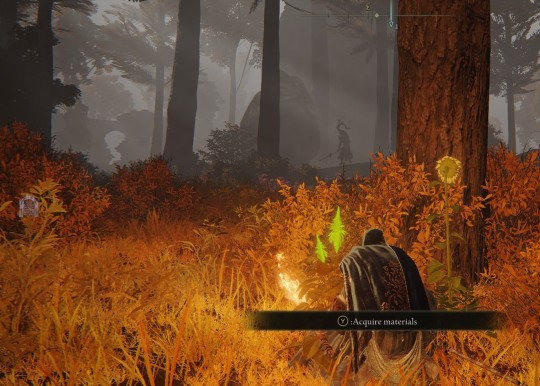

From the vantage point at the Altus Bloom behind this Wormface boss there is an optical illusion of a twister in a doorframe of the nearby ruins. That this can be seen from the location of an item that can be interacted with is important - the environment designers deliberately placed something in this spot to draw attention. The appearance of the twister recalls to me a theory proposed by another person on Reddit that Farum Azula was once located above the Woodfolk ruins and was picked up by the twister and moved around. But more importantly I realized that the last time that I spent a significant amount of time in this area I had not thought to look for hints in my spreadsheet.
Intro to The Spreadsheet
I don't think I've discussed on tumblr my FromSoft spreadsheet. The basics is that it's where I collect various date-based information that corresponds to the release days of various FromSoft games. It has sortof been evolving over time into the present monstrosity. First I started with the astrological zodiac, because I noticed some astrology trends in Elden Ring itself, and reading the synopses of Armored Core games there are enough hints to piece together an astrological timeline across the games. There is confirmation of this in ACV where you fight through the zodiac as enemies. Then I had the idea to search for whether anyone had noticed a zodiac trend in Sekiro and as it turns out 8 of the 12 Chinese zodiac animals are represented - and once again they match to release years of Armored Core games including matching elements (i.e. 3 visible Folding Screen Monkeys matches to 3 AC games in the year of the Wood Monkey - 2004). In fact, 2004 is practically a convergence point for all of the weird meta stuff that traces back to it.
Sometime later I saw a post where someone was speculating about numerology in Elden Ring and learned that numerology has ties to tarot. Coincidentally, the major arcana has 22 entries when "The Fool" is counted twice as both 0 and 22, which is exactly the span of time between Eternal Ring (2000) and Elden Ring (2022). So I added that to the spreadsheet, where 2004 is "the Emperor" and 2005 is "the Hierophant". And when anomalies started converging on 2004, I noticed that April 1, 2004 (April Fool's Day) provides a unique opportunity to set up a second lagging-behind tarot track. And it also happens to fall within the Gemini era of AC games, so it's the ideal time for an imposter zodiac to split off as well. Silent Line: Armored Core (2003) is about the discovery of a second underground twin city. Armored Core: Nexus sees the short-lived emergence of a new corporation who had uncovered an ancient superweapon - a spin on Gemini's trait of "communication between the surface and the underworld". This seems to create the headache that is AC games following the "false" but flashy Western Zodiac while the vibes-based vedic astrology continues to be expressed subtly, but lagging behind as it does in the regular calendar year. I have guessed that this is where twin cities Nokron and Nokstella enter the picture in Elden Ring - and their development of the mimic tear.
And what ties this all off nicely is that FromSoft axed 14 game franchises by the end of 2004. With the benefit of hindsight it can be seen that only two (2) game franchises were receiving new entries both before and after 2004: Armored Core and the newly acquired Tenchu. There was a deliberate change in direction this year.
At some point I had a thought to check the moon phase for every game FromSoft has ever released (in my defense - they really like referencing the moon), and found exactly 4 dates that they had ever released a game on either a new moon or full moon. Three of these dates are in 2004. The single instance in another year is Forever Kingdom on June 21st, 2001 - the date of a solar eclipse. The same eclipse occurred in 2020 without a single release from FromSoft directly - only Demon's Souls remake by Bluepoint. The Shadow of the Erdtree is scheduled for June 21, 2024. Applying a bit of math, this should be the year of the 20th major arcana "Judgement", which was in 2020 on the main track.
Basically, it is my belief that Elden Ring has a built in Augmented Reality Game component that can be uncovered by paying attention to what the writers pulled as inspiration from past games. Such as a past Age of Wood that correlates directly to the era of the Woodfolk Ruins. See below screenshots for what this data collection looks like for the years of 2004 and 2005, which were the years of the Wood Monkey and Wood Rooster:


Twisters and the Winds of Change
"The wind was not the beginning. There are neither beginnings or endings to the turning of the Wheel of Time. But it was a beginning" - Wheel of Time Book 1: The Eye of the World
Following the trail of the Wood Rooster led me to discover that I am missing yet another column of data. I was on a wiki binge about the exact sequence of events at the end of WWII and from an article on the Potsdam Agreement I noted that Potsdam is on the Havel River. "Havel the Rock" is a character in Dark Souls who I was certain was inspired by Taurus because of his rocky, mountain-like design, and hoof-like feet and proximity to the Taurus demon. But actually looking at the name "Havel" it's a Gaul word that means "rooster", which would fit him to the year of the Rooster. And indeed his helmet resembles a cock's comb. But that made no sense for the spreadsheet - there is nothing "Taurus" about the year of the Wood Rooster in terms of the AC game matchup and there is no year of the Earth Rooster within the history of FromSoft. So failing all other options I turned to tarot. I knew very little about tarot before this little project, and did not realize that there is also zodiac tied to tarot suits. And sure enough, the zodiac attached to The Hierophant is Taurus. Strengthening the association, this is also probably why Havel's backstory has him as being a Bishop - the Heirophant is otherwise known as "the High Priest". Havel is known to hate the magic of Seath the Scaleless - I wonder if this hints that Seath is the Magician of the 2nd tarot track...
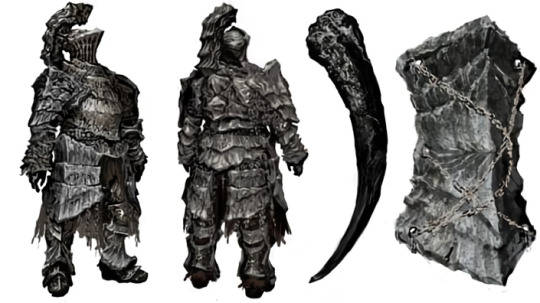
Some key art for Havel the Rock
So why was I looking at the Potsdam Agreement? The last game of 2004 was Metal Wolf Chaos. Of all of the games in their extensive library, FromSoft chose to bring back this game in response to popular demand. And of all of the dates to release a bombastic game about an over-the-top American President carelessly using weapons of mass destruction they chose August 6, 2019 - anniversary of the day that an atomic weapon was first detonated over Japan. I don't believe in coincidences when it comes to the release dates of FromSoft games, at least not in the past few years. Bloodborne: The Old Hunter's DLC released on November 24, 2015 - the birthday of Carlo Collodi, author of Pinnochio. This DLC sees the appearance of Lady Maria in the flesh, after previously meeting a doll fashioned in her image in the base game. I can only imagine that the developers of Lies of P sussed out some part of what FromSoft is up to and used it for their own Bloodborne-inspired game. Pinnochio is an impudent boy made of wood, perhaps what might be described as a Wood Monkey even. And once again, the Armored Core series pulls through in confirming that yes, FromSoft did have Pinnochio in their back pocket dating far earlier than you'd think. In Armored Core 2 (2000) and Armored Core 2: Another Age (2001) the corporation Balena has an "inside weapon" part called Puppet which "fires a dummy for enemy radar". Baleen is an archaic word for whale, from French - as in the whale that swallows the wooden puppet. The worm face in the Woodfolk ruins is not actually looking directly at the Minor Erdtree - it is looking at the pine tree in front of the tree. Pinocchio means "pine eye".
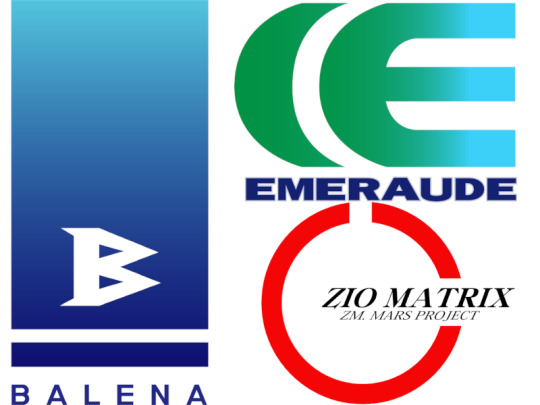
The 3 corporations of the AC2 generation. Zio Matrix I think to have the strongest ties to astrology, because Mars is the planet ruler of both Scorpio and Aries. Emeraude will be discussed below
As an observation of how this ripples forwards, 2024 is the Year of the Wood Dragon.
We're still a few meanders away from my point about the twister. In Metal Wolf Chaos, the president of the United States of America Michael Wilson has a lady on the coms named "Jodi". A charming gal who talks in his head and tells him what to blow up next on this whirlwind of destruction. I think it's a perfectly fitting origin for Marika ('murica) and her loyal shadow the Metal Wolf Maliketh. It's strange, isn't it, that Maliketh and Gurranq are the same, but displaced in time? Well, Metal Wolf Chaos (2004) exists beyond time trapped on the ancient device of Xbox Japan. Metal Wolf Chaos XD (2019) is much closer to the present, hence Gurranq's presence in the Bestial Sanctum. And maybe take a look at the white haired protagonist of Tenchu Dark Shadow (2006) - was not Marika's only use for her shadow as a place to keep Destined Death? I don't really think it matters if FromSoft always had the meta-narrative in mind when they picked up the Tenchu series or if this is a new lens applied with hindsight - it fits on the timeline.
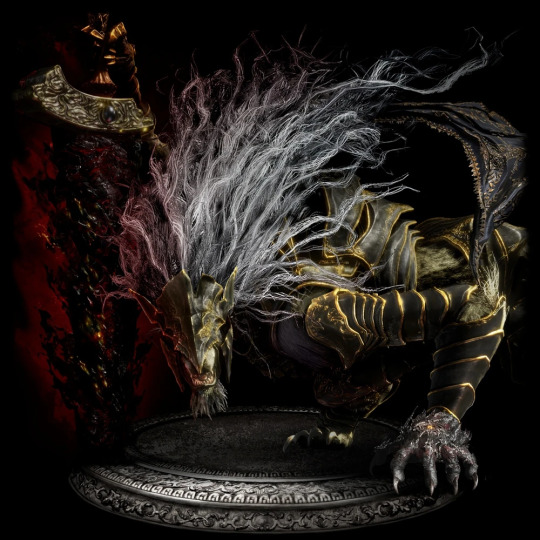
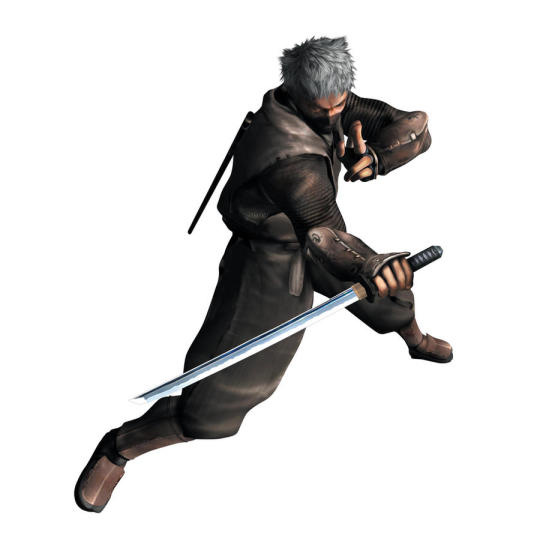
Is it a weak connection that they both have white hair and hold sword in reverse grip and are Shadows? Maybe so, but I will grasp these straws
But Michael Wilson and Jodi are imposters - they are mimics of something older. That's what everything about the Gemini twins and the Wood Monkey and the new April Fool's Tarot are hinting at. Even on a surface level, it's a self-parody of the Armored Core format. And so the search continues with Armored Core (1997) where the major corporations are "Chrome" and "Murakumo Millenium" (murakumo means "a gathering of clouds"). The game has 29 template emblems, some of them generic and some silly and some obtuse, and the one that is most relevant for this train of thought is "Comet Judy". The name Judy being a very close corruption of Jodi. There are 3 leading candidates for what this emblem could be a reference to:
The Yokosuka D4Y Suisei (彗星) - a Japanese WWII dive bomber with a name meaning "Comet" but which the Western Allied reporting name was "Judy". A Suisei plane was used by 3 men in one of the final kamikaze ("divine wind") attacks by Japan in the hours after surrender on August 15, 1945.
A song called "St. Judy's Comet" which is a lullaby from father to son by Paul Simon (most famously from the musical duo Simon and Garfunkel), released on May 5, 1973.
Judy Garland - an actress who is most famous for playing Dorothy, a "good witch who fell from a star" in 1939's Wizard of Oz. Comets are not the same as shooting stars - that would be meteor fragments - but the actual art of the emblem does show a star.


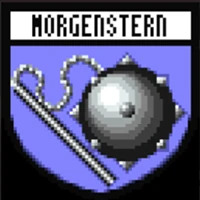
Aside from Comet Judy I added 2 other emblems that are my favourites to make the embedded visual look better
The first two candidates will come up when you search "Comet Judy". And honestly, I would not count them out as being relevant in some manner (May 23 was the Japanese release date of Lost Kingdoms 2 in 2003 - and the ideal of a lost lullaby about a magical dreamland saint has some appeal there). The third only really makes sense with context clues. After all, there are dozens of Oz references in Elden Ring, and a handful here and there in Demon's Souls (the Twister-like shape of the Old Monk's Robe - perhaps a connection to think on between "Monk" and "Monkey") and Dark Souls (the "Homeward" miracle - good witches do "miracles", according to the 1939 film). They had to be inspired by something. And finally this is where the twister comes in. The one that picks up Dorothy's house and carries it off to Oz and a journey to find the wizard at the Emerald City. Another corporation of AC2 and AC2: Another Age is called "Emeraude", a French word meaning "Emerald". And after getting into the lore of the Wizard of Oz is when I start realizing that the twister can be a recurring phenomenon - The Wizard also arrived to the Land of Oz on a twister and it was through his influence that the Emerald City was constructed. Emeraude is a rival corporation to Balena - who is the corporation that manufactures the Moonlight laser sword in the AC2 generation of games. Luckily, following the guiding moonlight is where I find another solid point of comparison anchoring the Woodfolk Ruins twister to the years 2004-2005. Armored Core Nexus (2004) and Armored Core Nine Breaker (2005) are follow-ups to AC3. And in this generation of games the Moonlight laser sword is manufactured by the corporation "Mirage". As in Elden Ring's "Mirage Rise", which is found right next to the Woodfolk Ruins.
Here's another wrinkle to all this though. I know that the twister in the Woodfolk Ruins that I believe to be corresponding to Metal Wolf Chaos is not the first time a numen has fallen from a star/comet, or been carried in on the wind, or whatever. Both because of the pre-existence of the Emeraude Corporation, and because the name and context of Chelona's Rise tells the story of a witch who had a house dropped on her - and I think that Chelona's Rise pre-dates Mirage Rise by the nature of their puzzles. The question becomes: how many times before and after have the winds of change blown through, and when exactly were the other times? I think that there have been at least 4 twisters, as demonstrated by the 3 smaller twisters that can be seen accompanying timeless Farum Azula from the disconnected area through the Four Belfries "Crumbling Lands" portal. For the view of Farum Azula seen from the Isolated Divine Tower there is only one single twister seen spinning at the centre of the ruins - what possible meaning does this have?
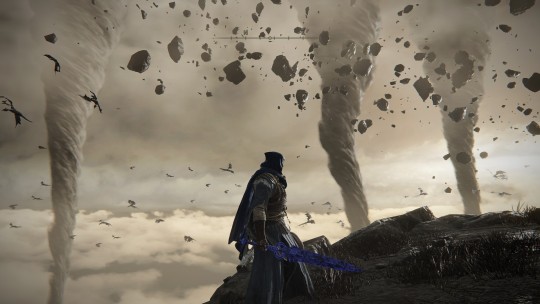
The next lead that I have is Wyndham Ruins. Sometimes I'll idly do a "this day in history" kind of search for the various available dates. And it happens that July 10th is both the release date of the original Armored Core and the birthday of sci-fi writer John Wyndham, whose most famous work is The Chrysalids (as in how Roderika describes the Grafted Tarnished), and it's a story about a post-apocalyptic future where women are ostracized for giving birth to mutants. Wyndham also wrote The Day of the Triffids which is described as "After most people in the world are blinded by an apparent meteor shower, an aggressive species of plant starts killing people". And also The Midwitch Cuckoo "in which the women become pregnant by brood parasitic aliens". So, some interesting parallels there. For the Cuckoo in particular, this meshes with the knowledge that it's an old motif in the Lands Between - even the Moon of Nokstella has two cuckoos perched at the top of it.
Also notable that Wyndham Ruins is infested with deathroot. An aggressive species of plant that grows like a Cancer - which is one of the zodiac that spans across the "Age of Wood" according to my timeline project.

#elden ring#elden ring lore#media analysis#fromsoftware meta narrative#There are 24 named ruins in Elden Ring...does each one represent a year from 1994 to 2017?#what about the unnamed ruins at The Three Sisters?#I have about 80 game entries on the sheet in case anyone was wondering how many there are
4 notes
·
View notes
Text
Armored Core and Astrology: Calibration of the FromSoft Meta-Narrative
There's a solution that I worked out some time ago for aligning the Demon's Souls archstones with Armored Core:
Pisces - Archstone of the Small King Armored Core 2 (2000) (antagonist of AC 2 is "Leos Klein" where "klein" is German for "small". And lions tend to be associated with kings) Aries - Archstone of the Burrow King Armored Core 2: Another Age (2001) (in the narrative of AC2: AA the people of earth are living burrowed underground) Taurus - Archstone of the Tower Queen Armored Core 3 (2002) (antagonist of AC3 is a disembodied entity called "The Controller" which suits the puppet theme of the Fool's Idol and the Yellow Monk's Head Wrappings) Gemini - Archstones of the Shadowmen & the broken Archstone of the Giants Silent Line: Armored Core (2003) (The Shadowmen concern themselves with mourning the dead - stuck in the past. The theme of Silent Line is discovering a mystery from the past and investigating it) Cancer - Archstone of the Chieftain Armored Core Nexus (2004) (it's the last stone and the Demon's Souls hub is called the Nexus)

Why do I express everything in terms of zodiac? Because that's what FromSoft has been doing for almost 30 years. They even gave away the answer key with the "Zodiac" faction in Armored Core V. By this point in time the Zodiac are tragic figures - a project of humans who turned themselves into machines for the goal of creating the ultimate AC unit, but who can no longer remember why this was what they wanted. By examining that narrative of each of the games in combination with the themes and motifs of each astrological sign, I arrived at some conclusions about where they each align:

As a side note, I suspect that originally this framework can be traced back to the Organization of the Zodiac ("OZ") from mecha anime Gundam Wing, which released in 1995-1996. Long enough in advance of Armored Core (1997) to have inspired an odd kind of long form storytelling.
Anyways, I think that the best order of presentation is not chronological but instead tackling the elephant in the room: why do I clump together multiple games in the years of 2004 and 2005 under the sign of "Cancer". Essentially, it was my assumption that this is representative of wild and tumorous growth in multiple directions. There is also the benefit that both Armored Core 4 and Silent Line: Armored Core are relatively strong in their respective themes pointing to the surrounding two zodiac signs.
Armored Core 4 - Leo
AC4 sees the protagonist trade in the "Raven" designation for the "LYNX" pilot - a large cat like the lion of Leo - the fixed fire sign which astrology assigns the sun as its planet ruler. Every faction in AC4 has some element about them that is themed around the sun. I have a longer breakdown in a separate post, but for quick reference here is the list of the solar theme of each faction:
Rayleonard - "ray lion's strength"
Leonmeccanica - "lion meccanics"
Rosenthal - top pilot is Leonhardt, meaning "lion heart"
Bernard and Felix - top pilot Mary Shelly pilots the Prometheus AC unit. Prometheus stole fire from the gods (a.k.a. brought humans the power of the sun at their command)
Global Armaments America - produces the SUNSHINE AC parts
Akvavit - created the "Sol Dios" ("Sunday") cannon
Equbal - does not have a sun theme in AC4, but it changes to conform to the theme in AC4A. Its emblem changes from a hand to a sun symbol and manufactures the "SOLUH" core in AC4A. A character named "Irbis Orenstein" works for Eqbal with the emblem of a mountain cat (Irbis is Russian for "snow leopard"), of which Orenstein would be the future name of a golden lion themed character in Dark Souls.
AC4A also thematically also carries on the theme of "Leo" in the form of an antagonist. A major character in the narrative is Maximilian Thermidor, who leads a group called ORCA. In the short lived French Republican calendar, "Thermidor" was a month in the summer beginning July 19th or 20th and derived from the Greek "thermos" meaning "heat" and overlapping with Leo in the Western Zodiac running from July 23rd to August 22nd.
In AC4A the remnants of humanity are confined to megastructures called "cradles". While this should not traditionally associate with the sign of Virgo (the sign most associated with motherhood is Cancer, because it's ruled by the feminine moon), it sometimes does because wires get crossed with the Virgin Mary being associated with this sign in a Christian context. And I would assume that the artists at FromSoft came across this in their research considering that in the Japanese version an emblem featuring a stained glass window of Madonna and Child is used for the pilot "Menno Ruh" who was the strongest pilot of Global Armaments America before the player character defeats her to take that top position, and ultimately leads GA America to winning the LYNX war.



Lion emblems used by pilots from Leonmecannica, Rosenthal, and Global Armaments America
Silent Line: Armored Core - Gemini
Silent Line is in the same continuity as Armored Core 3, which was a reboot of the series - covering events after defeat of an A.I. called "The Controller" (or "DOVE" in the Japanese version). Humanity emerges from the underground city of Layered and begins exploring and redeveloping the surface world which had be ravaged by previous conflict and turned into an inhospitable wasteland. They discover an impassable region beyond which nothing that is sent ever returns and call it the "Silent Line". Similarly, lost technology is discovered in space in the form of a satellite cannon which has its source behind the Silent Line. The player character Raven is sent to break into the Silent Line and discovers an A.I. construct called "IBIS" protecting a second Layered city, which is then liberated.
Gemini in astrology is a fixed air sign with the planet ruler of Mercury. Due to Mercury's status as the messenger of the Roman gods, this sign is seen as introspective in the theme of communication between the surface (i.e. the present) and the underworld (i.e. the past). In this game there are twin cities both associated with birds - creatures of the air - the second city of which lags slightly in "the past" compared to the first city.
As a side note, Armored Core Nexus is a bit difficult to place and seems to be on the border between Gemini/Cancer. The plot of the game is that a new corporation named Navis is hoarding ancient technology, which suits that Gemini theme of communication with the past. On the other had, that ancient technology proves to be detrimental, as activating the weapons and the ensuing tensions between the various corporations threatens to destroy the planet.
Armored Core VI: Fires of Rubicon - Sagittarius (and beyond)
For the upper bounds there is the latest entry to consider - ACVI: Fires of Rubicon. Despite the 10-year gap between games, there are a few ways that AC6 is telegraphed as representative of Sagittarius.
Firstly, one of the Corporations that manufactures the AC parts literally has a centaur shooting a bow as it's emblem. The game also includes within the emblem templates some symbols corresponding to Capricorn and Neptune, which seems to me a nod to the late arrival of these game in context of the zodiac themes. In other contexts such as Elden Ring the astrological clock has moved on by 2023, and ACVI has fallen behind schedule. This ties into the theme of Rubicon, as it was after Julius Caesar finished the war that was started by crossing the Rubicon when he diverted attention to correcting the drift in the calendar year by adding 3 extra months to the year 46 BCE.
Secondly, Sagittarius is a mutable fire sign broadly associated with learning and evolution/reforging of the self. It typically poses the question of "how can man merge higher consciousness with animal instincts?" or something similar. As an overall theme, the burning coral provides the fire, the merging of 621 with the coral consciousness provides the evolution.
Furlong Dynamics does not have a large presence in the game, as one of the minor corporations, but they are notable for collaborating with the corporation Elcano to develop the ALBA head and arm parts that are used in the STEEL HAZE ORTUS Armored Core. This is the second AC used by Rusty - one of the AC pilots who is most amicable towards the player character.



Logo of Furlong Dynamics and the emblems used by Rusty both before and after he reveals his allegiance to the Rubicon Liberation Front and makes the transformation to piloting a new AC unit

The whole set of Preset 4 featuring several familiar animal motifs, and a few that have yet to be used substantially like the stegasaurus
Armored Core V - Libra
For the weighing scales of Libra (a fixed air sign governed by Venus), consider the theme of portioning justice. In ACV the main narrative does not feature multiple corporations in competition with each other as in previous Armored Core games. There is just Alloy Gate City overseen by the dictator called "FATHER" and "The Corporation" who he hires to supplement the city Police Force in opposition to the player who joins the Resistance. The AC belonging to the Resistance leader is called "Vendetta" and is later reconstructed as "Vengeance" - which both represent calls for justice born of an "eye for an eye" mentality. It would be expected that the idea of seeking justice is prominent in the story of an underdog opposing a dictatorship.
Another observation related to previous discussion of the tarot influence on the meta-narrative: ACV released in 2012, corresponding to Major Arcana 12, the Hanged Man. There is an AC named "The Hanged Man" in ACV operated by an AI called "The Chief", who is the head of "The Corporation" and thus a major antagonist. In a literal sense, execution of a man by hanging is an execution of justice.
And as for the zodiac pilots embedded into this narrative, they develop the theme of the Zodiac being ruled by the planets, which appear as wandering stars. Of all of the planets named in the Roman tradition, Venus is the only one named for a goddess. The zodiac faction is led by their own star - a female Operator named Angie who controls a number helicopters by the collective name of Polaris, which is a name for the north star.
Armored Core 2 - Pisces
A corporation called "Zio Matrix" has acquired plans for a research project on Mars that was begun before the "Great Destruction" that was the inciting incident for Armored Core (1997). In classical astrology terms, Mars is the planet ruler for both Scorpio and Aries. So the thinking here would be that whoever gains control of Mars over the course of the events of this game will have control of events in the subsequent era of Aries. And this does seem to be a factor in the plot of Armored Core 2: Another Age, where the situation on Mars is affecting the politics back on Earth.
Armored Core: Project Phantasma - Scorpio
Armored Core: Project Phantasma is a prequel as verified by the story taking place in the year ED 0156, which is two years before the timeframe of Armored Core (1997) in ED 0158. It is perhaps the only time that FromSoftware has ever made a prequel, as by the time of the Dark Souls series whenever they wanted to show something about the past it is framed as time travel (such as in Artorias of the Abyss), or delving into the more ancient and core layers of a dream (such as Bloodborne: The Old Hunters and Shadow of the Erdtree).
In isolation, Armored Core (1997) does not have much connection to the cardinal earth sign of "Capricornus". It's all planting for the future - for example the planet ruler of Capricorn is Saturn, which is the planet adorned by a prominent ring. Which likely contributes to the mythos of the "Eternal Ring" (2000) that later came to be known as the "Elden Ring" (2022). Capricorn is associated with bones and stone via its status as an earth sign, and as the beginning of something new through it's status as a "cardinal" sign.
On the other hand, Project Phantasma sneaks in a few more hints about its placement. Three context clues place it as zodiac Scorpio:
1) As previously noted, the Armored Core zodiac starts on Capricorn. Two years before = two signs before = Scorpio. Also noted that in Armored Core 2 a significant plot point is previous research being conducted on Mars, which is the planet ruler of Scorpio astrologically.
2) The enemy type with a body plan of a Scorpion (it shoots projectile attacks from its tail)
3) German hard rock band, “the Scorpions” released album “Taken by Force” on December 4, 1977, which was the same calendar day as the release of Armored Core: Project Phantasma (December 4, 1997). It's an absurd quirk of FromSoftware that they deliberately sync up game releases with the release dates of certain rock/metal music albums, or retroactively take inspiration from the album art and lyrics that happen to land on the same release date of their games. I have guessed that this takes cues from the manga JoJo's Bizarre Adventure, as outlined in this post. Some examples listed in this short post.
Closing Notes
I don't feel it necessary to go through every single Armored Core game individually - these six strongest examples are enough to make my point. That astrology has been the backbone of Armored Core all along - but spread so thinly and cryptically that it is difficult to perceive without looking at the set of games as a whole.
But because there is a fixed and directly historical sequence, the future Dark Souls, Bloodborne, and Elden Ring series concern themselves more with deconstruction. Dark Souls includes the "Capra" demons and "Taurus" demons as fixed points (with a twist - their heads are swapped), Orenstein is the obvious Leo the lion, and the repeated motif of twin Gargoyles and twin bells represents the concept of "Gemini". The runes around the astral clock in Bloodborne are tracking the various eras of FromSoftware as they align with the 12 zodiac signs - the way that the historical record is structured by astrology across all of these games is so predictable you can set a clock by it. Elden Ring again makes liberal use of allusions to zodiac, and similar to the astral clock the layout of the Round Table Hold is set up to convey historical information in sequence.
In short: I have no sympathy for people who claim that the stories of these games are intended to mean whatever you want them to mean and that not even the writers have a solid idea of what is the true interpretation. They are puzzles. Over and over again there are iterations on the same sequence of history being hard-coded into the game design. Each new game is designed to fill narrative gaps in the one that came before it and help confirm that you're on the right track to the "solution" to the puzzle, once you figure out the correct calibration between them.
#Armored Core#Demon's Souls#astrology#fromsoftware meta narrative#media analysis#A lot of the Demon's Souls (2020) design changes are questionable - but I do wonder about Bluepoint's self awareness of this#Considering that they removed the giant green gemstones from each archstone - the “heart” of the original is absent in the remake#learning that Elan Morin “Ishamael” from Wheel of Time gets a sneaky allusion in Armored Core: Master of Arena. Deep sigh of resignation.
1 note
·
View note